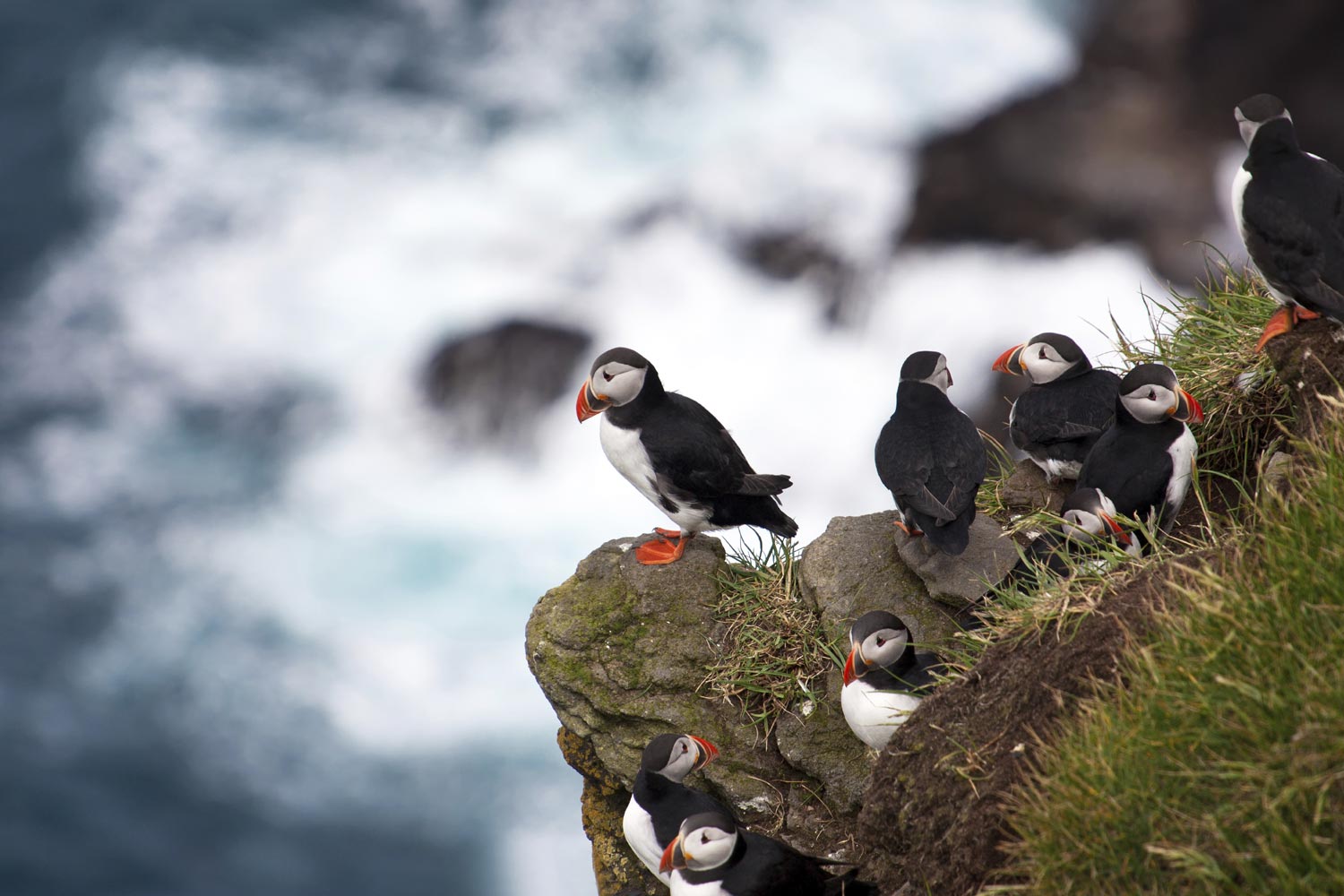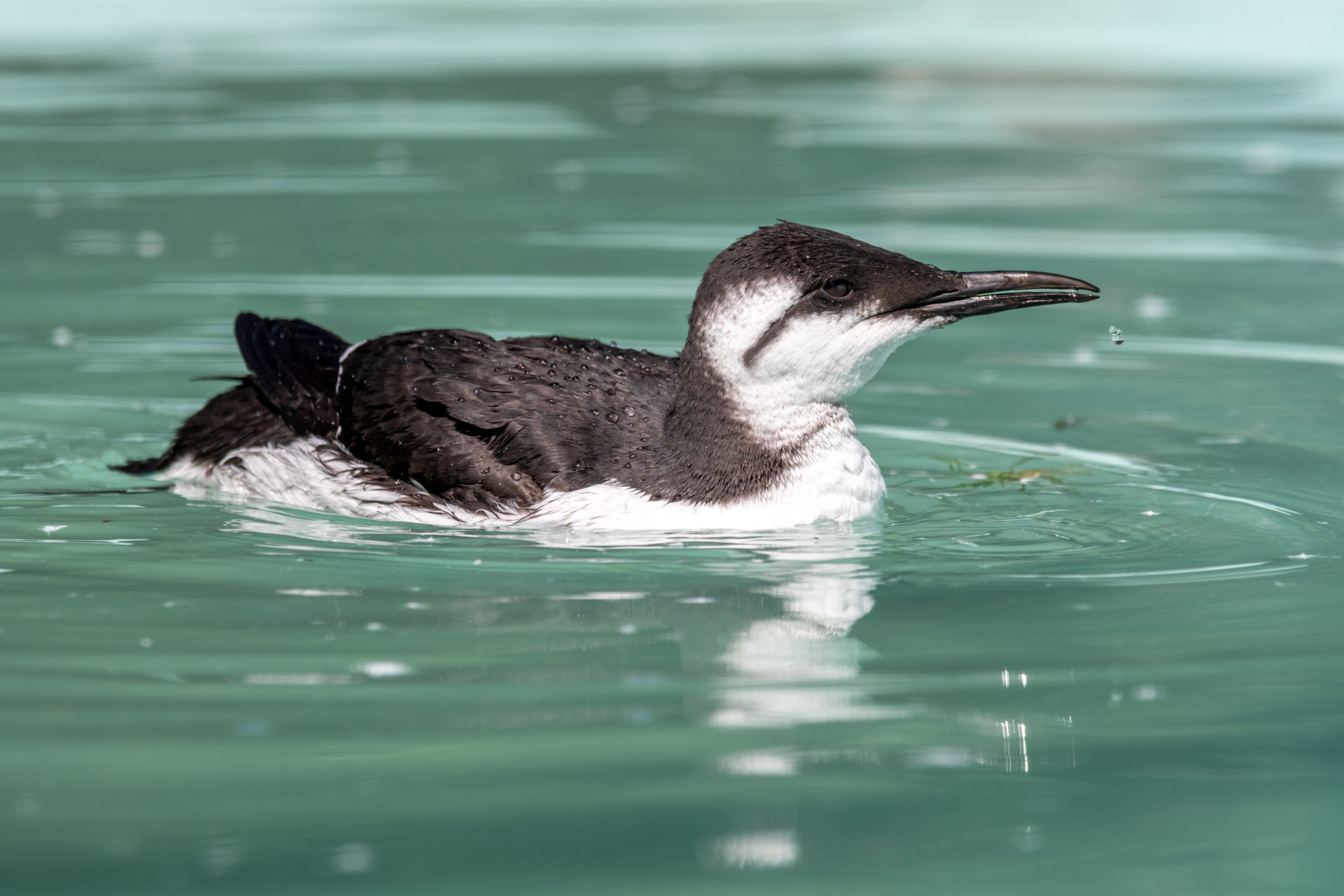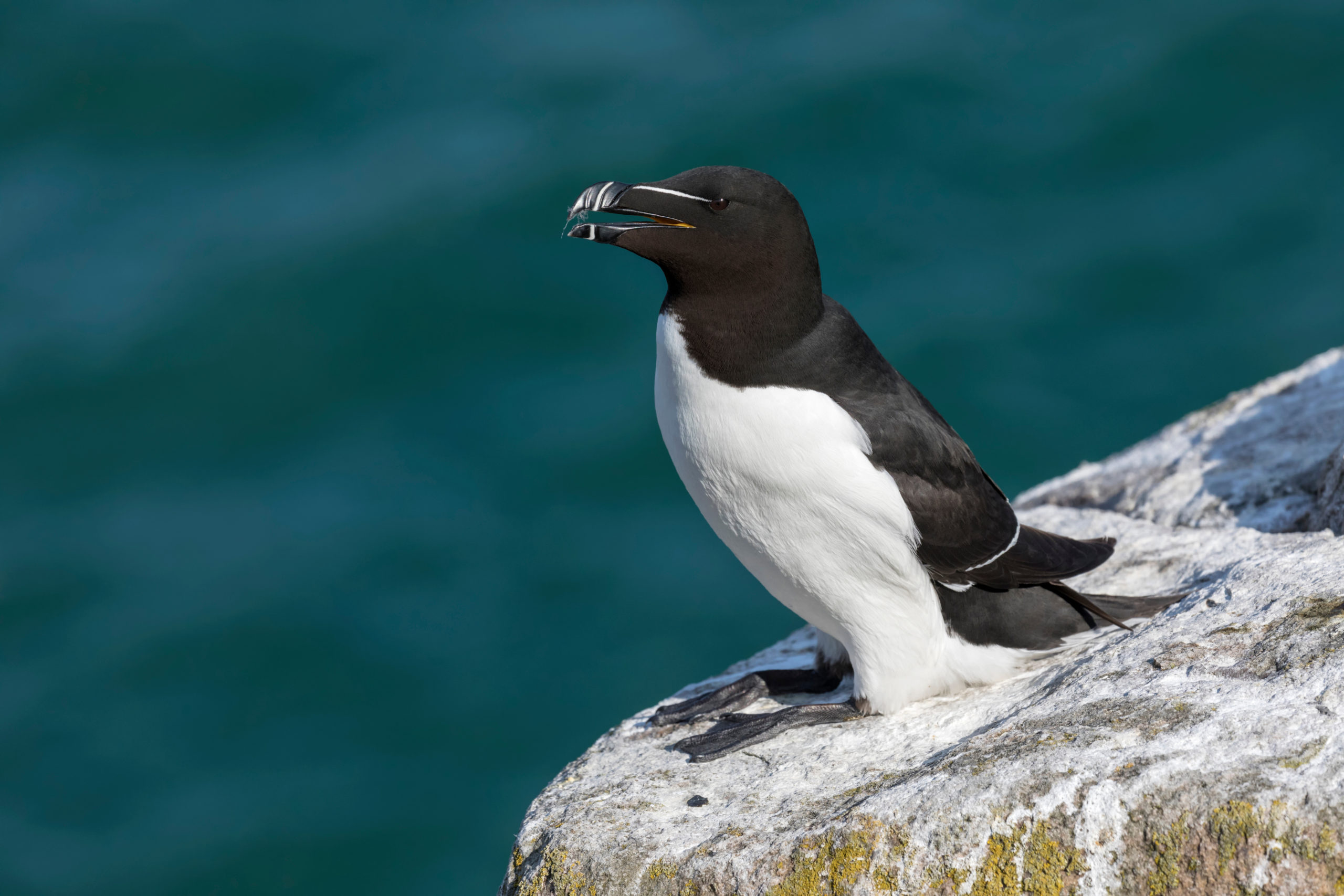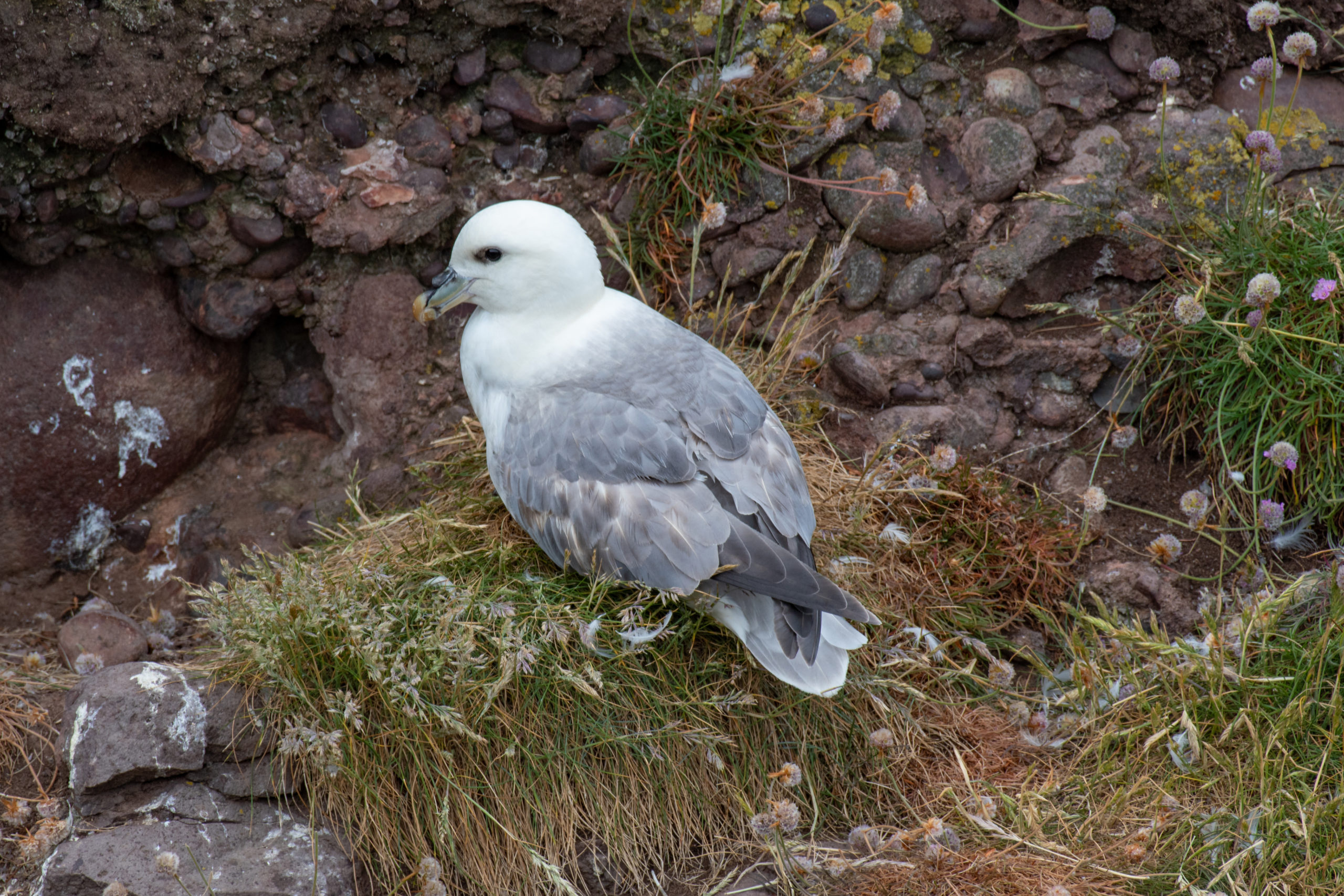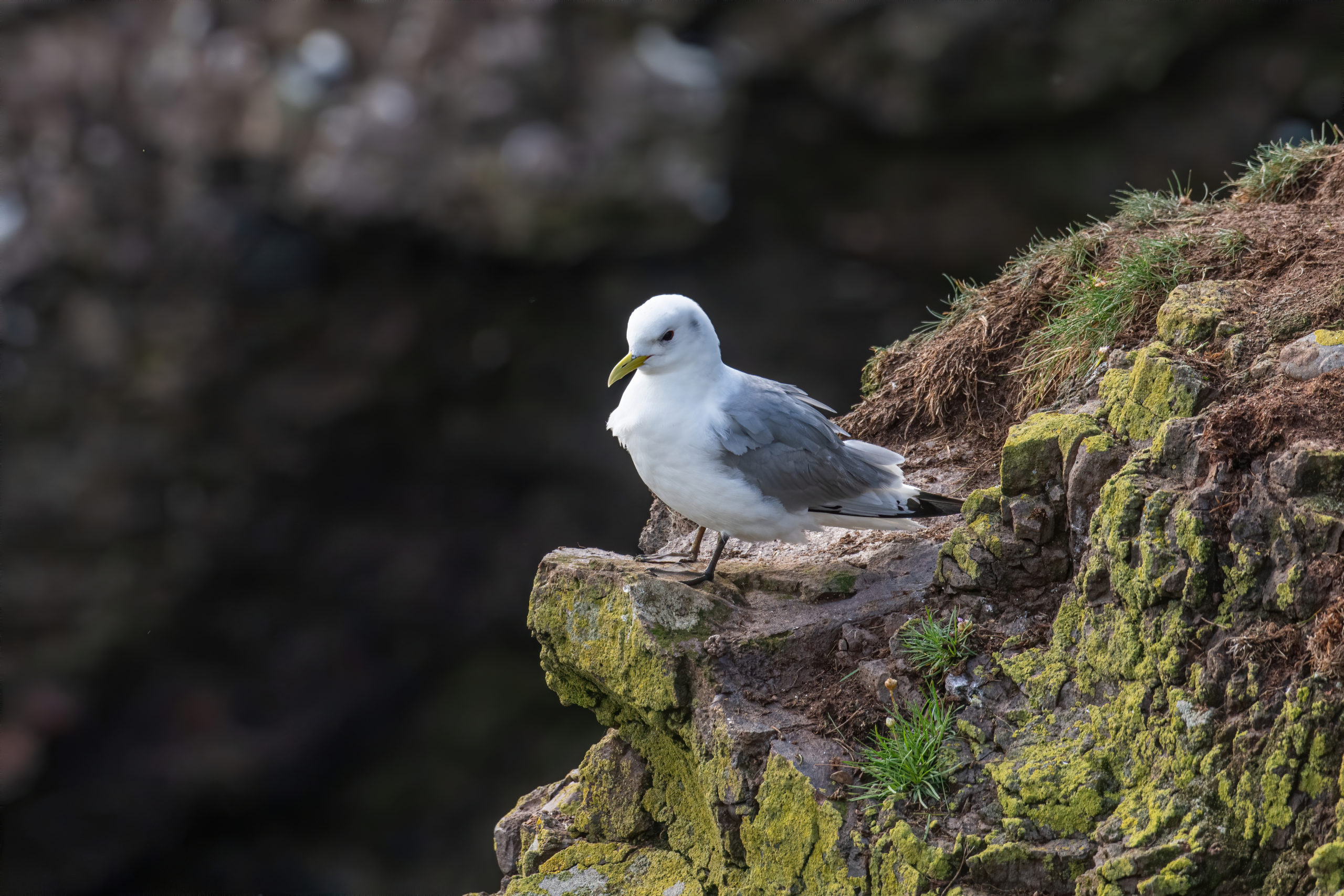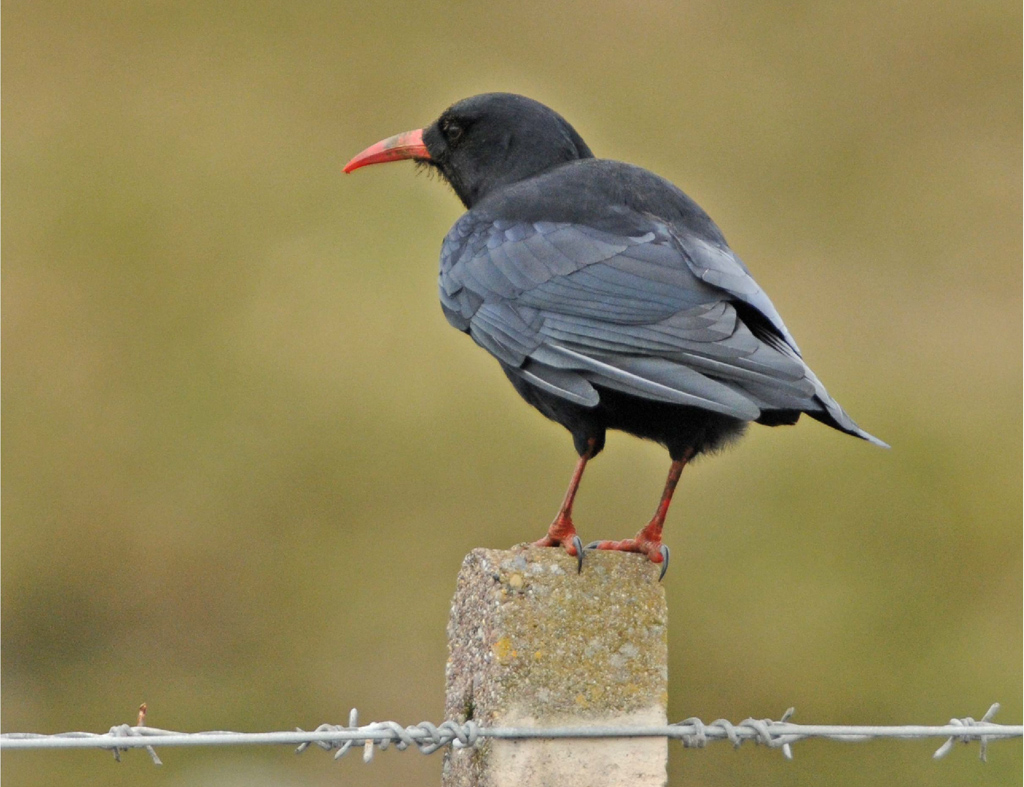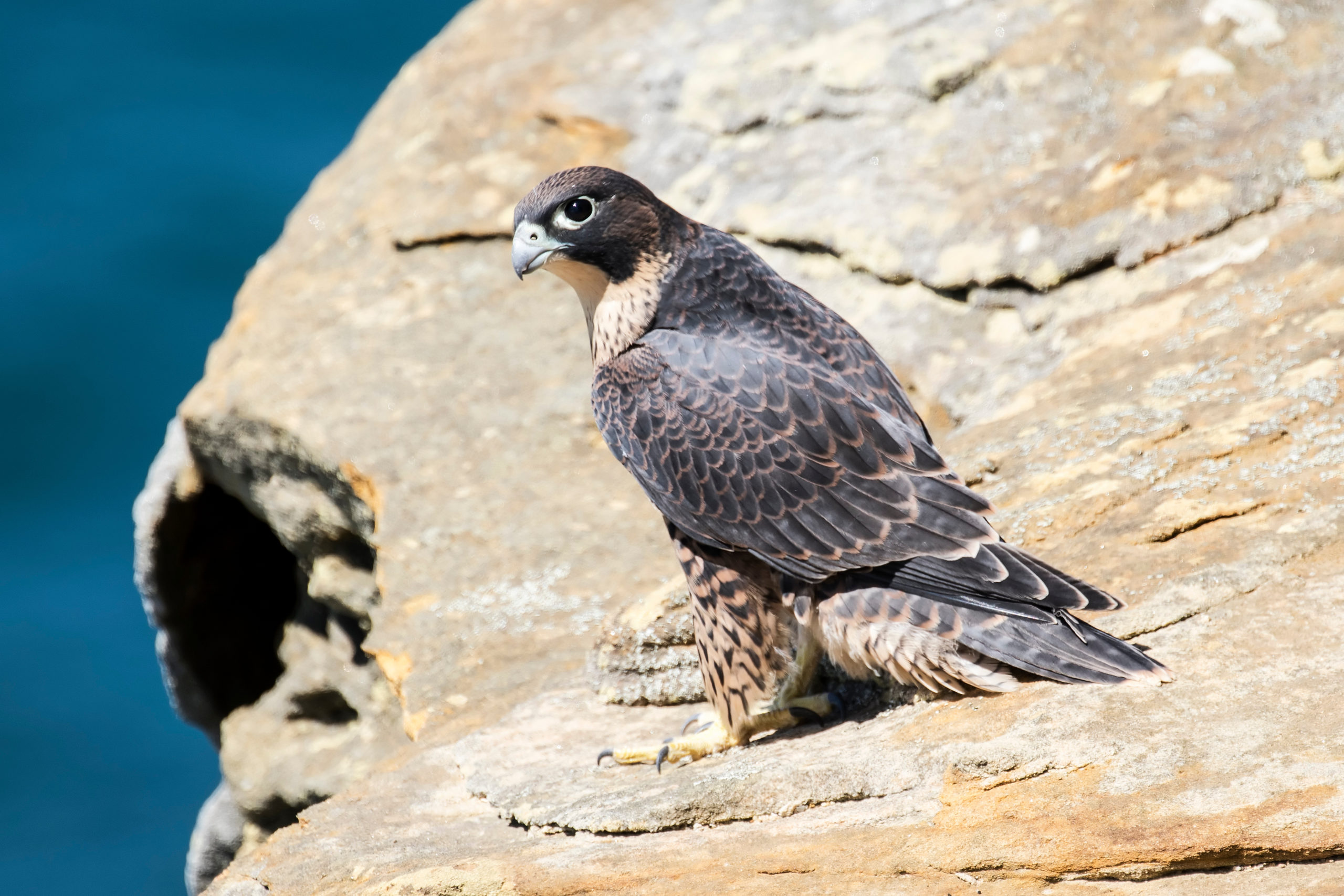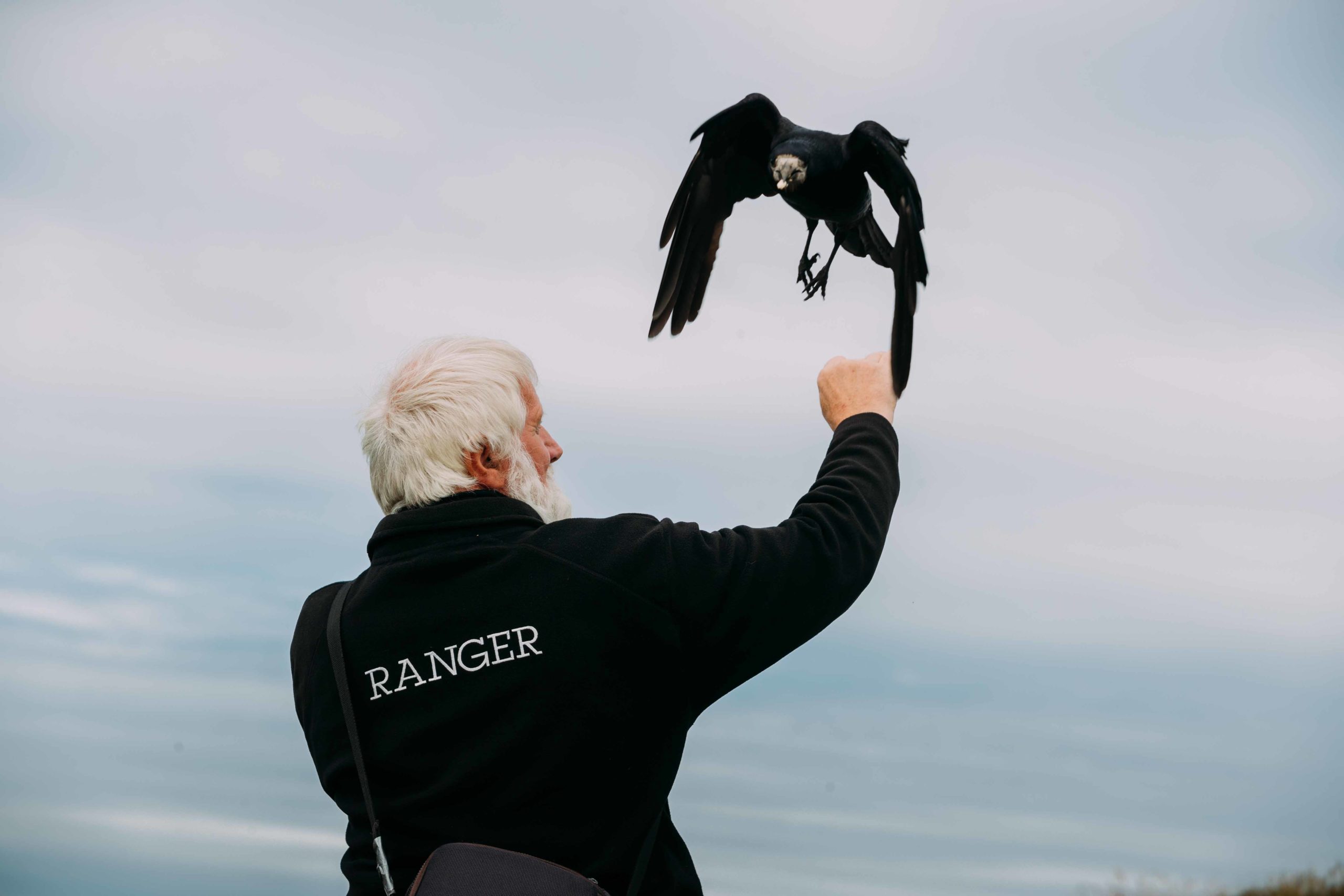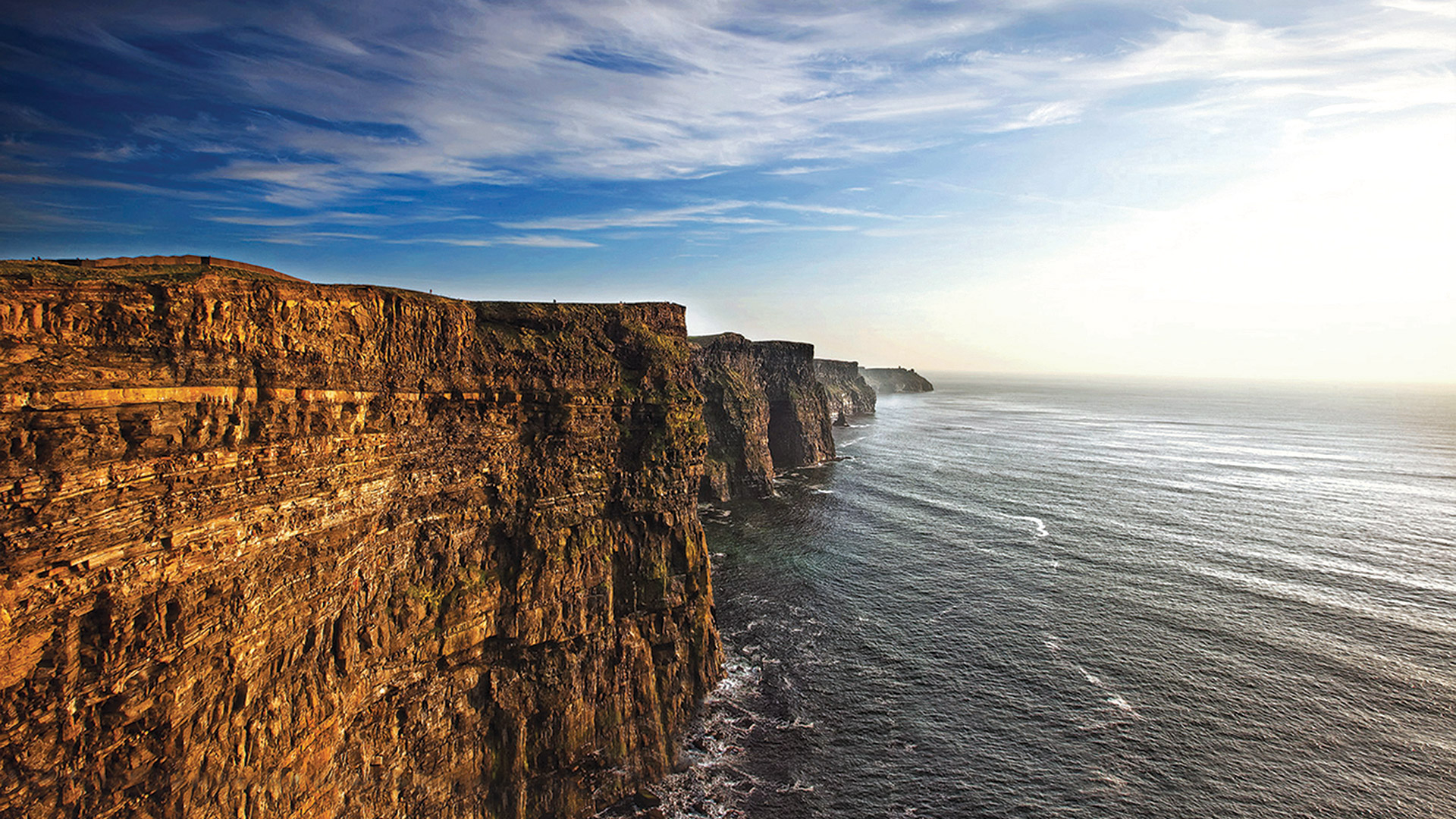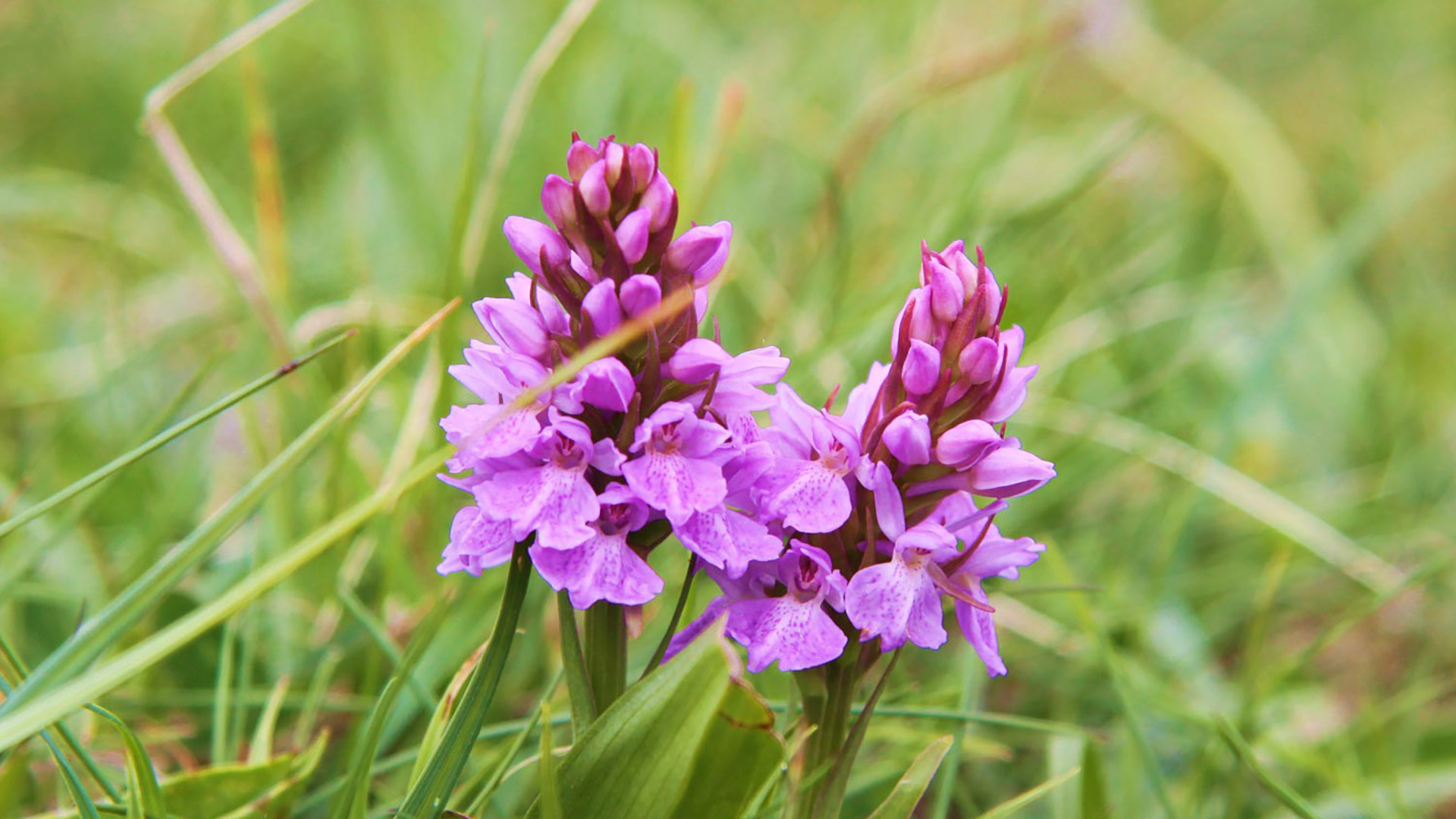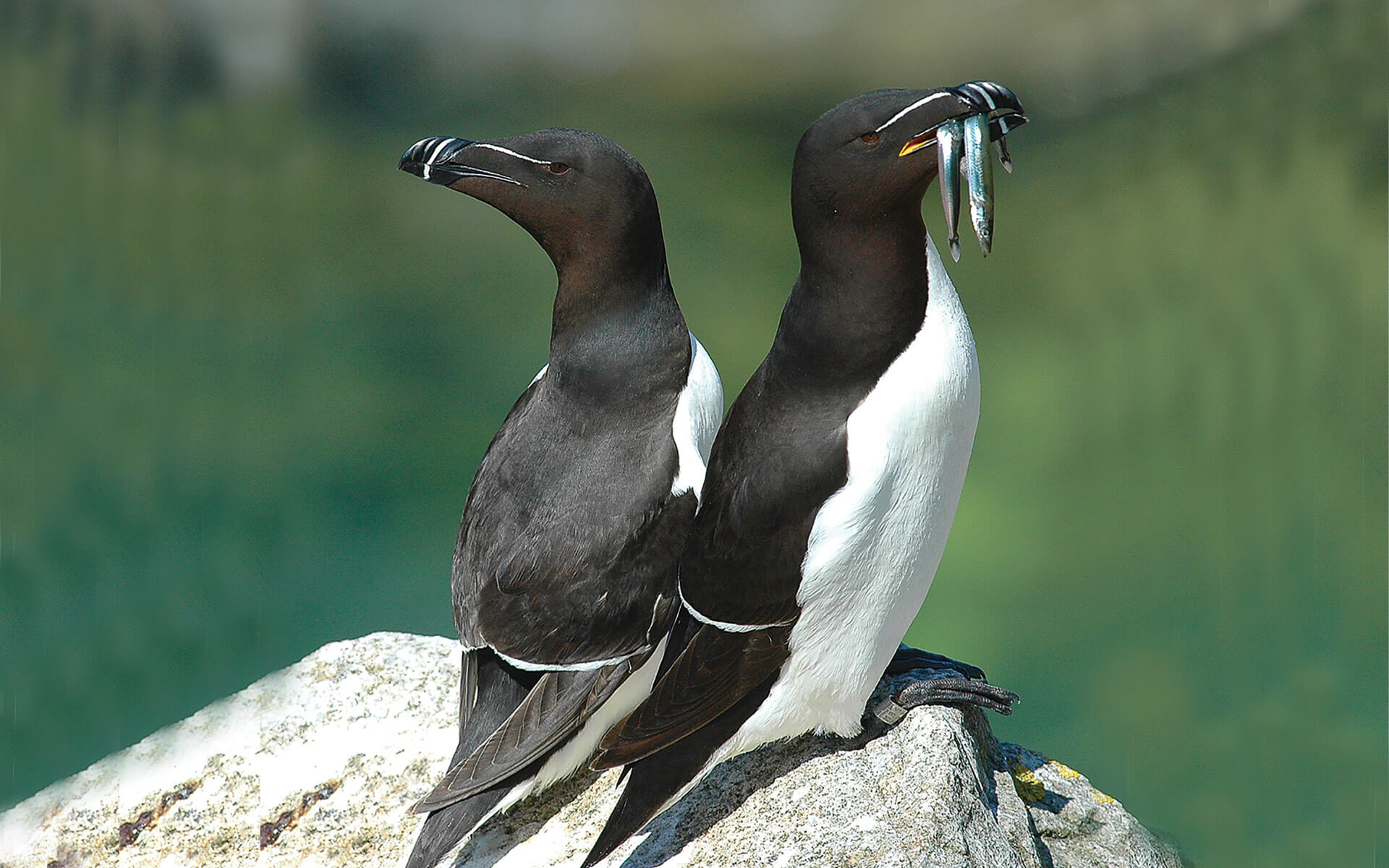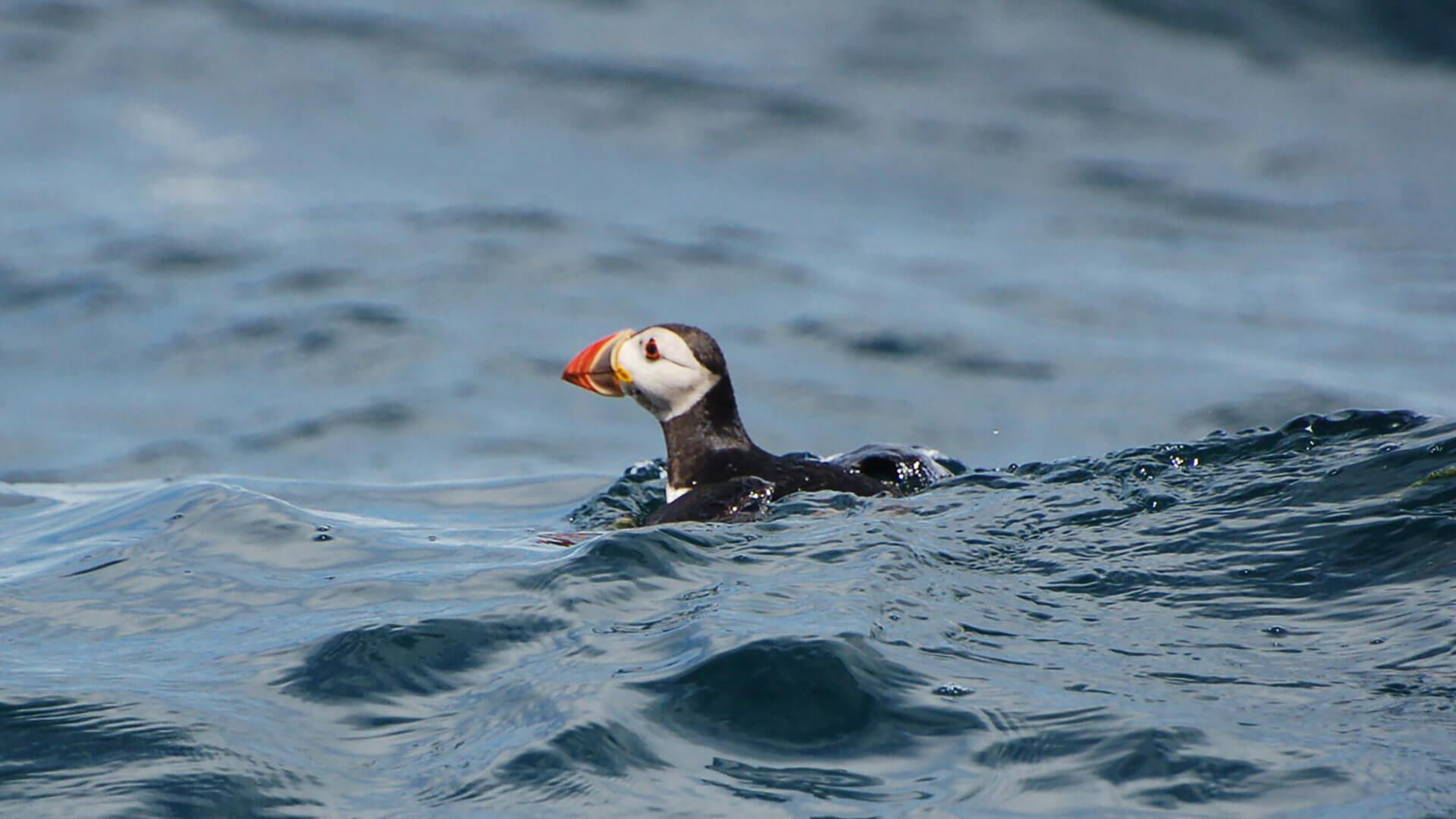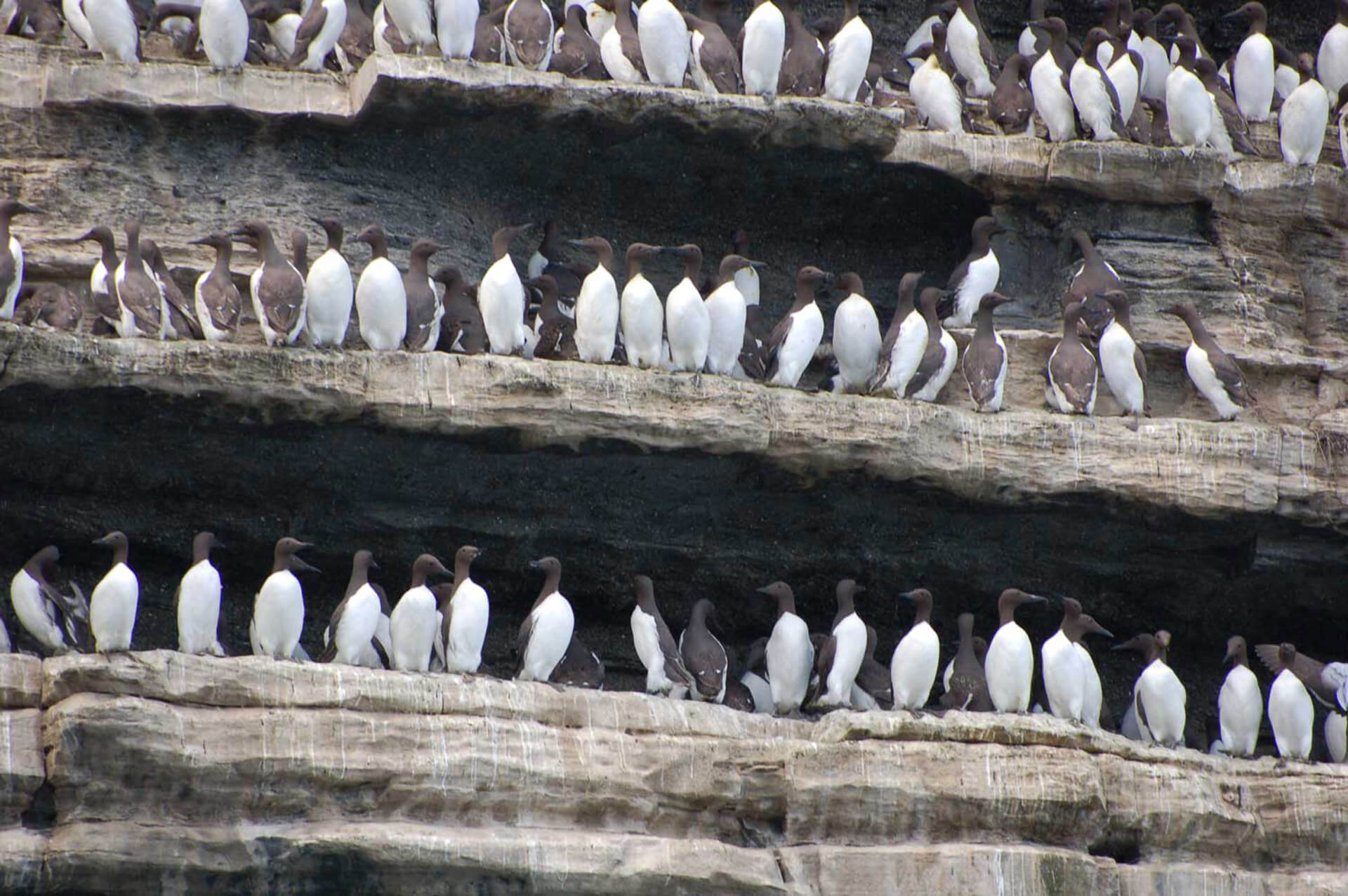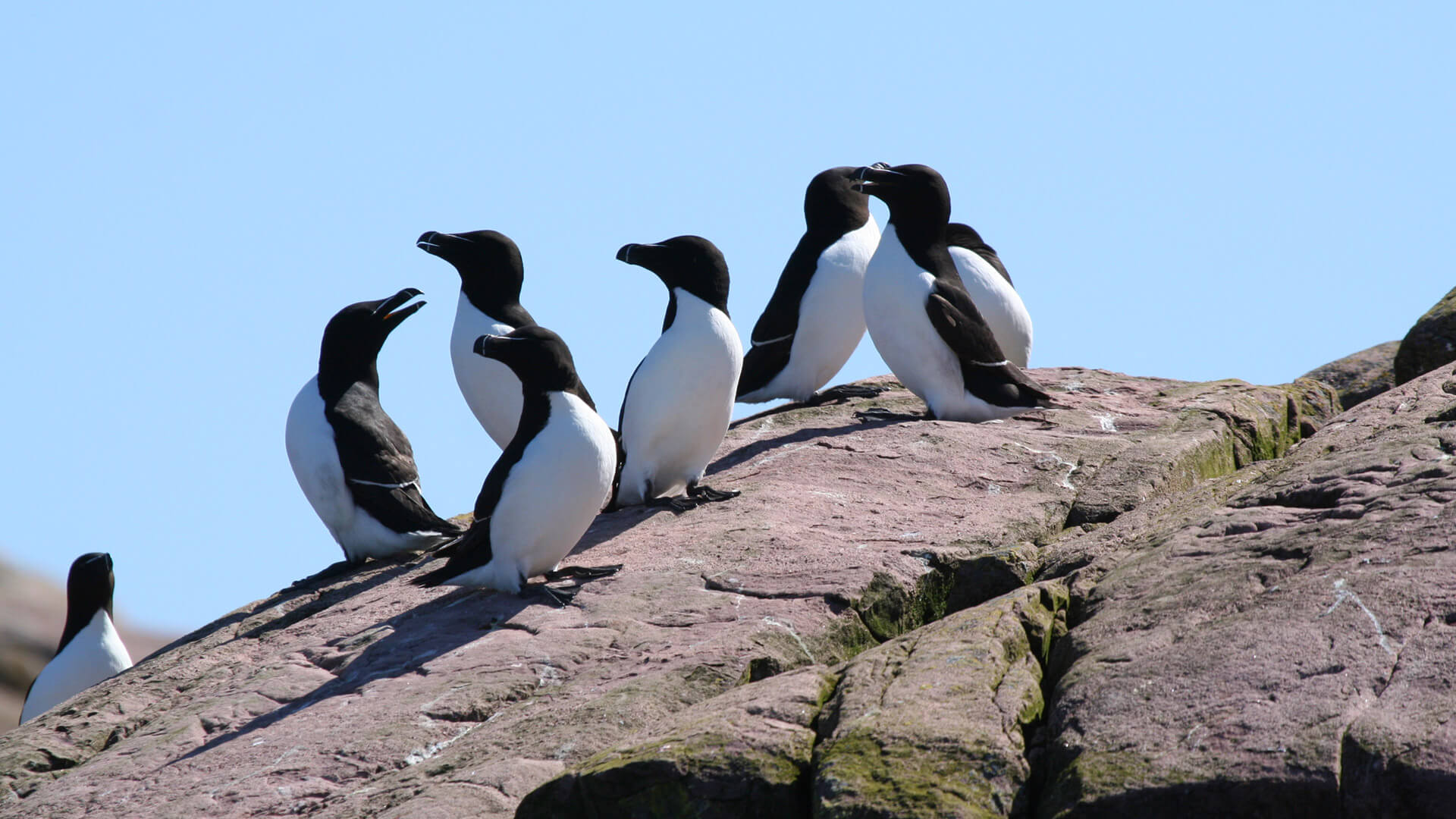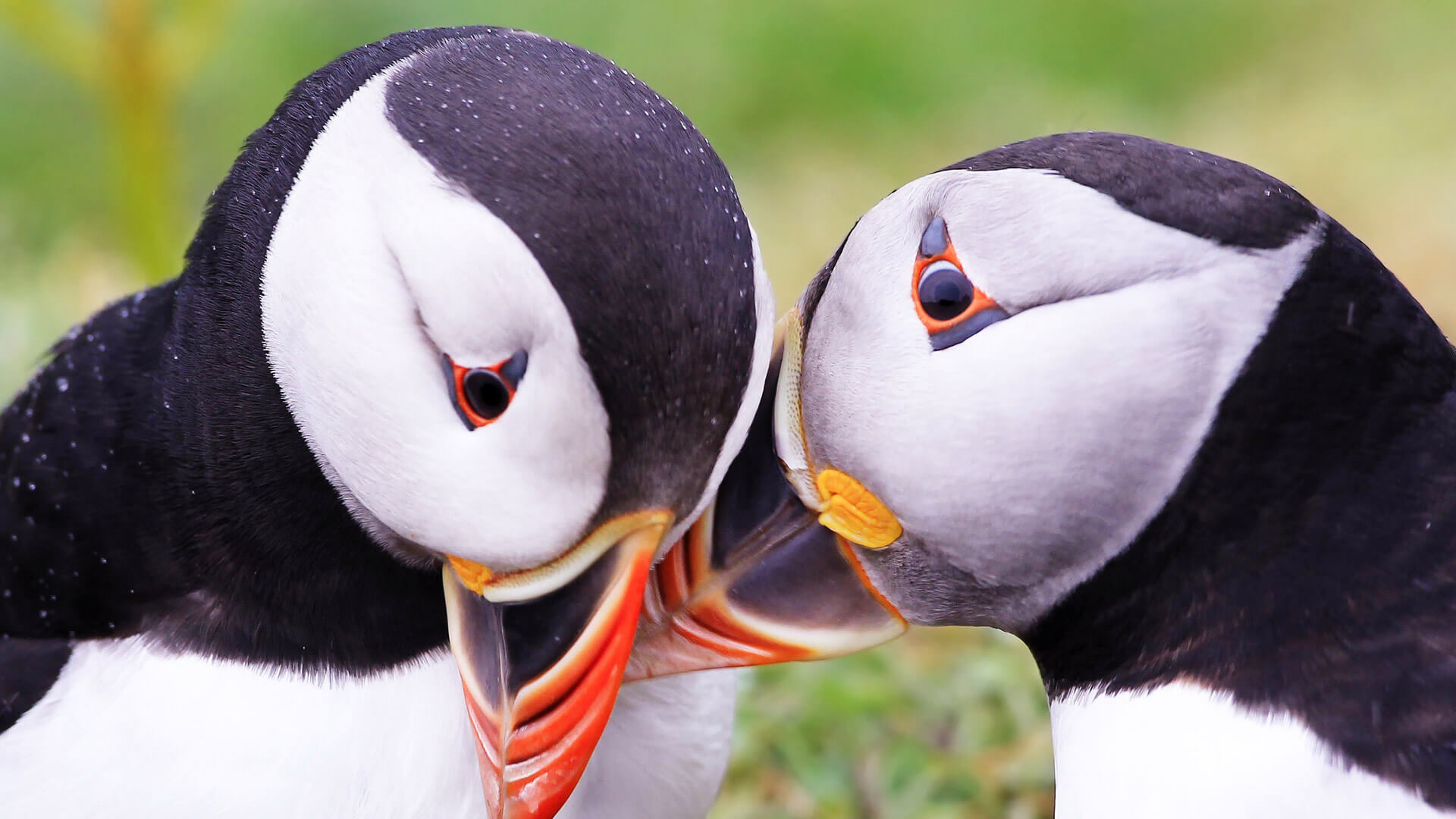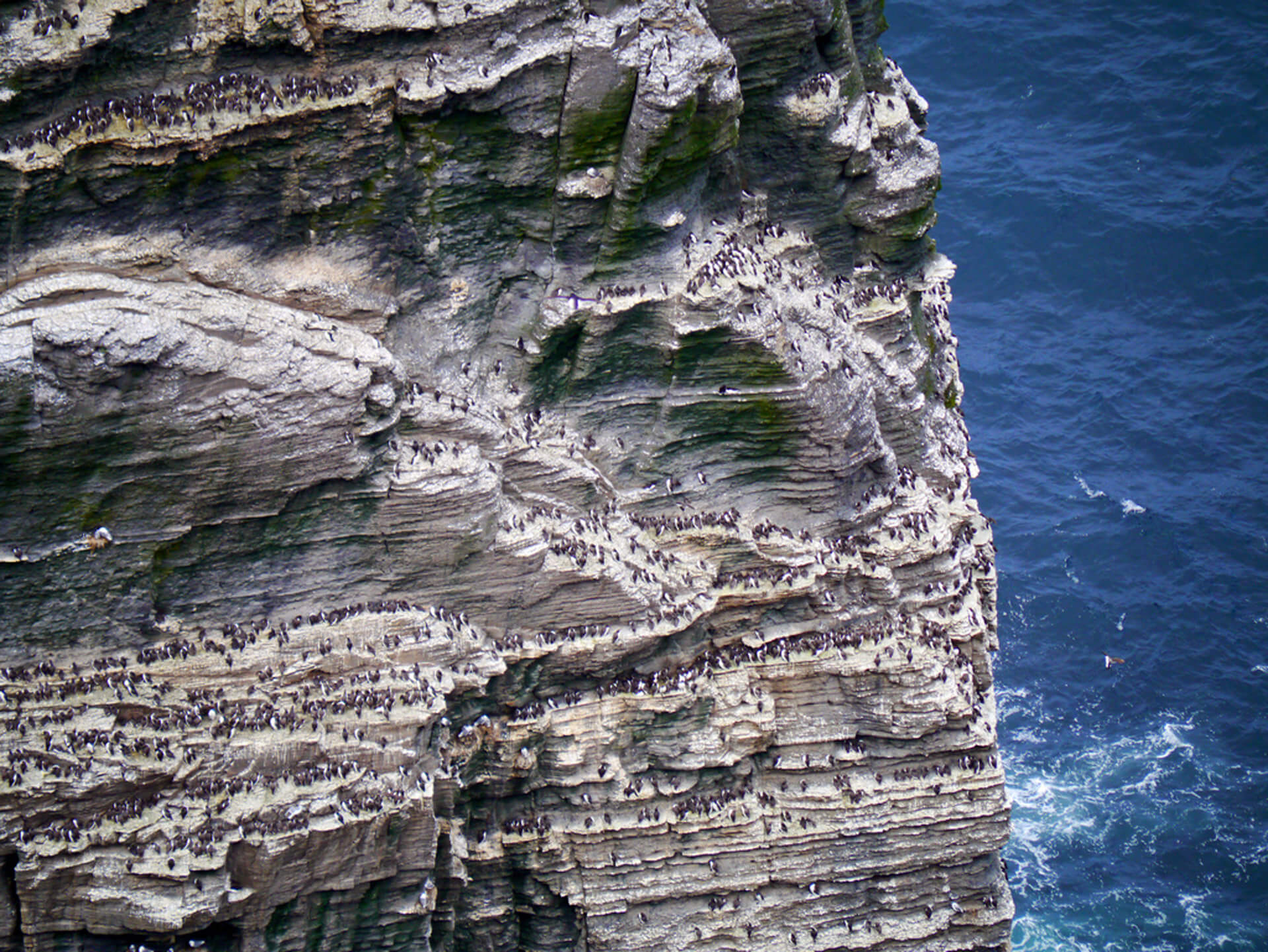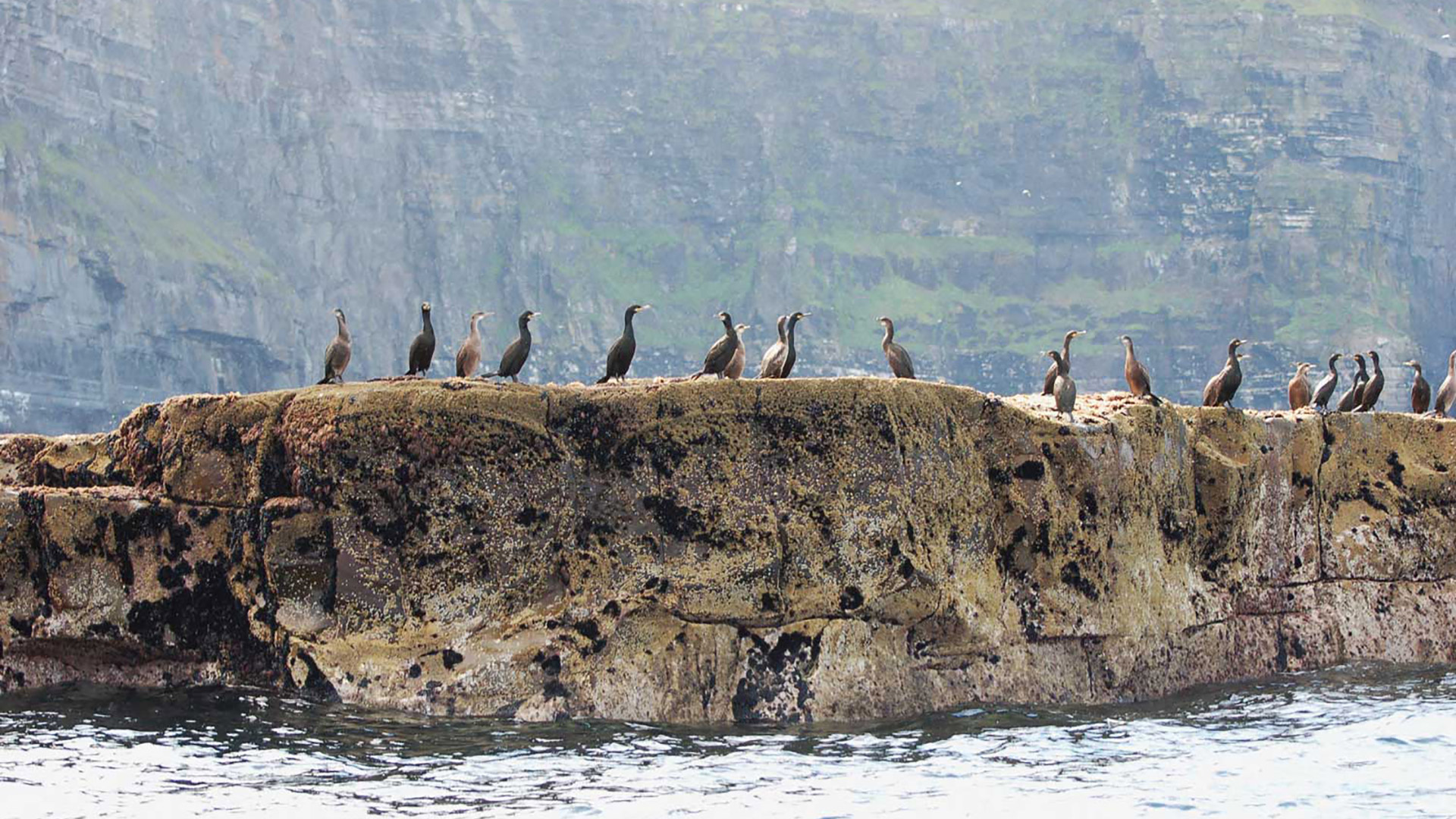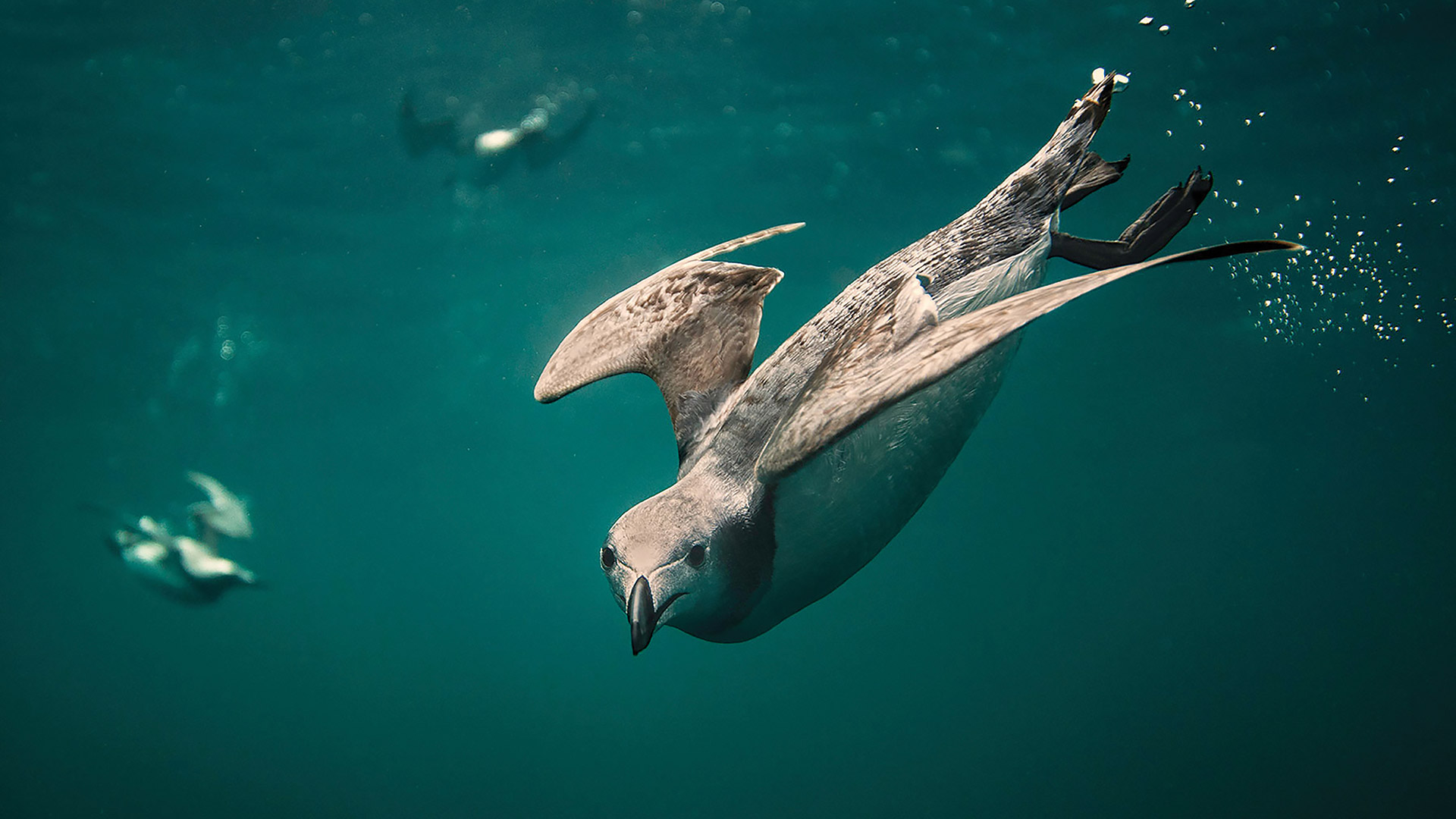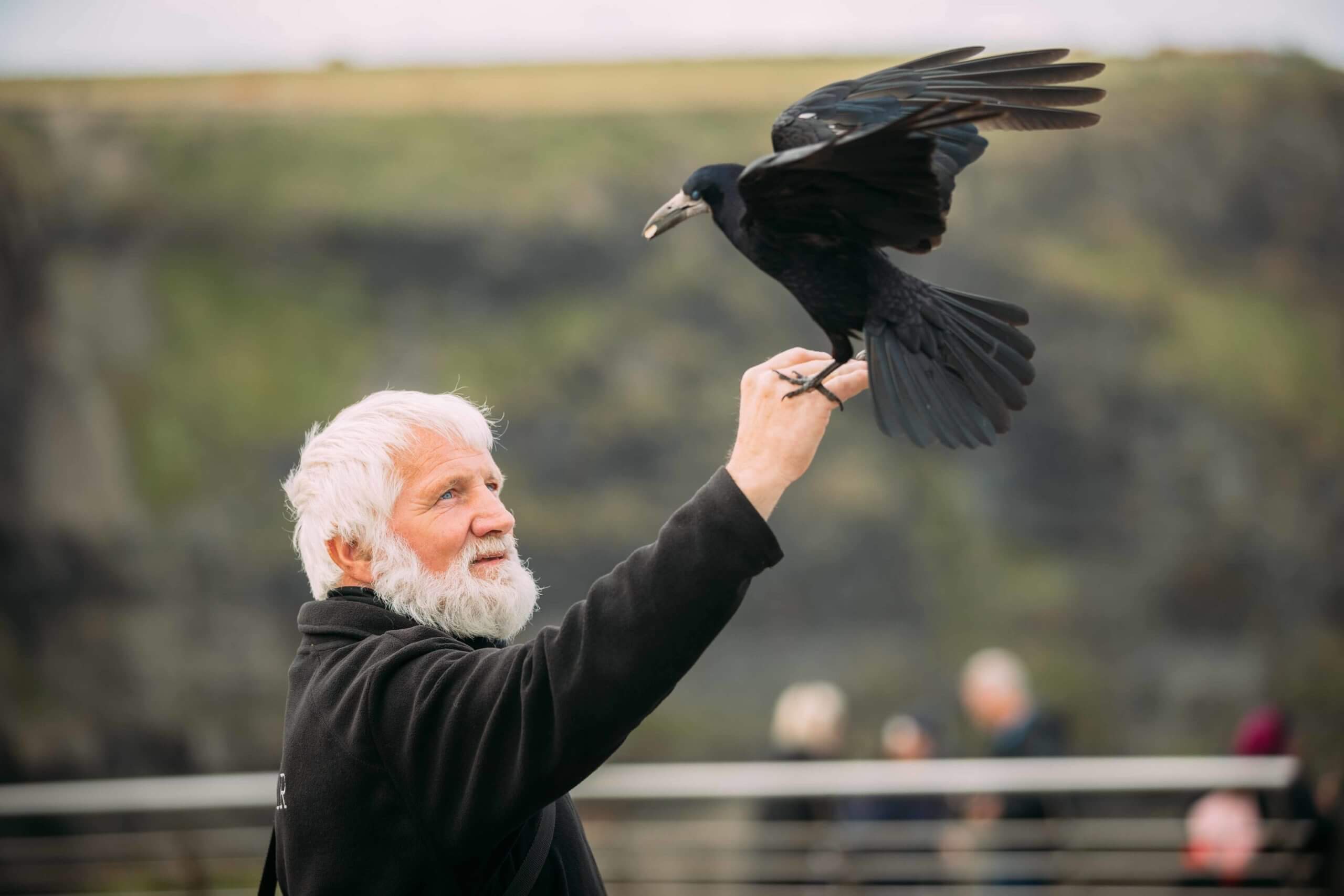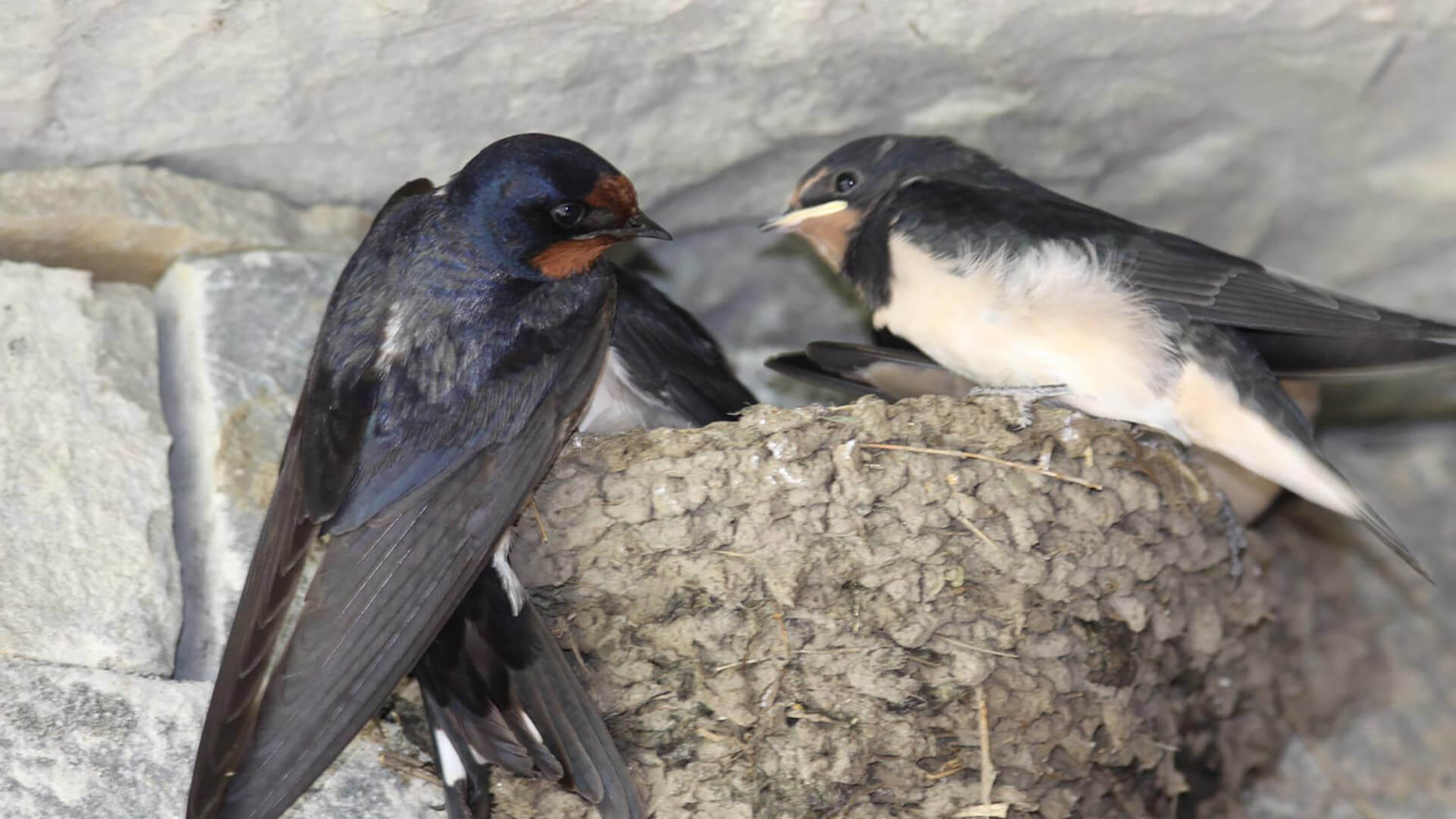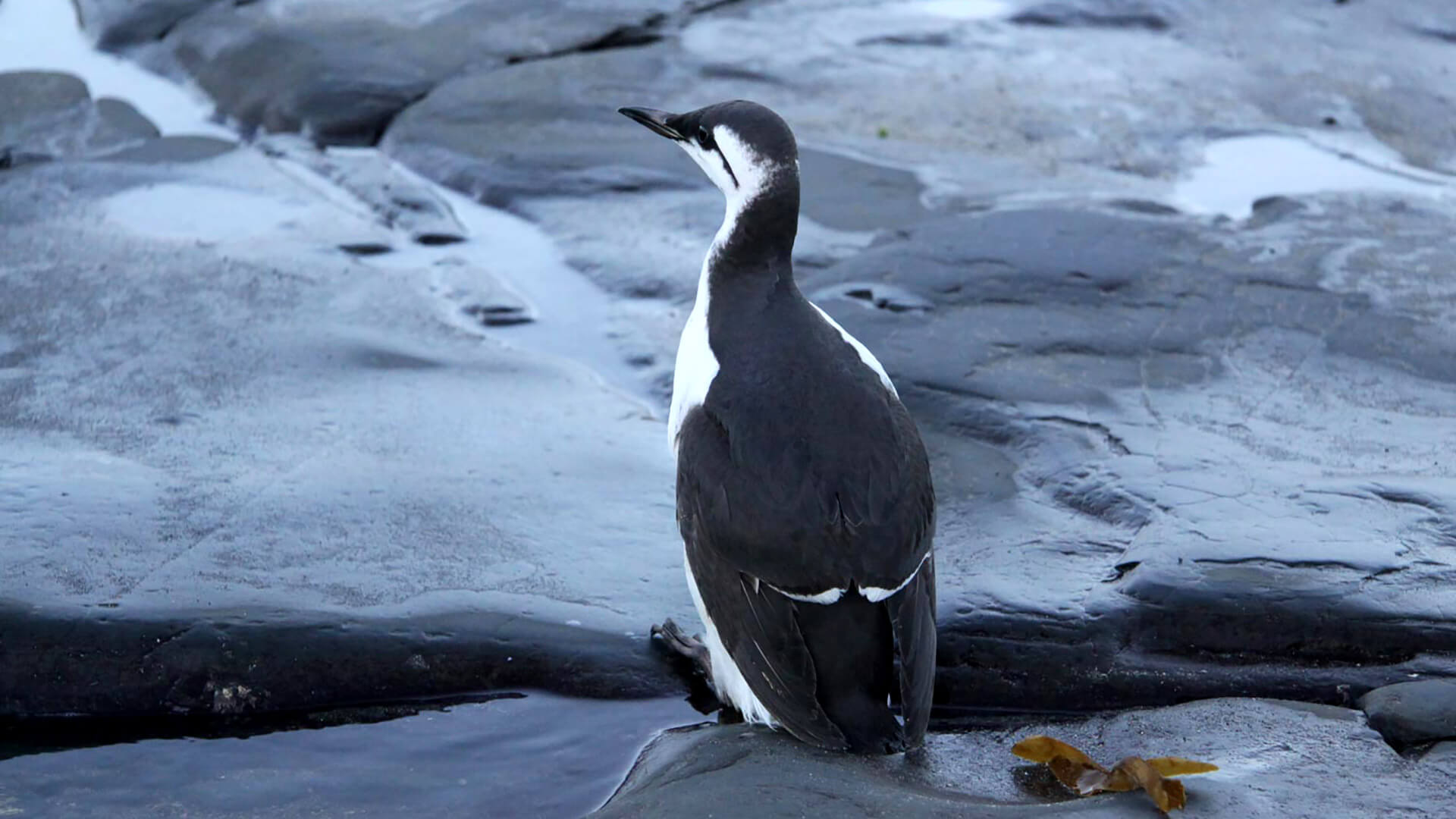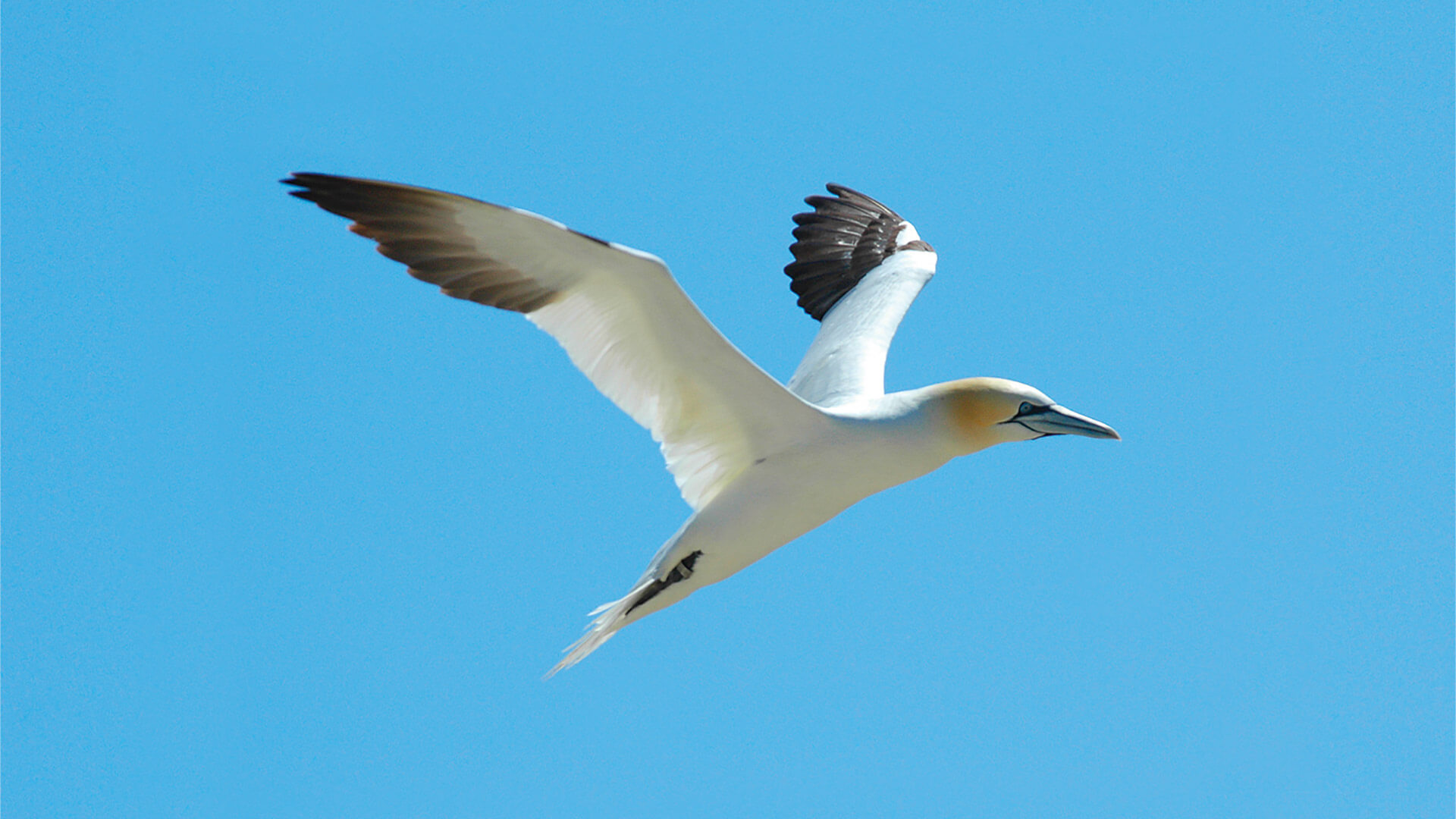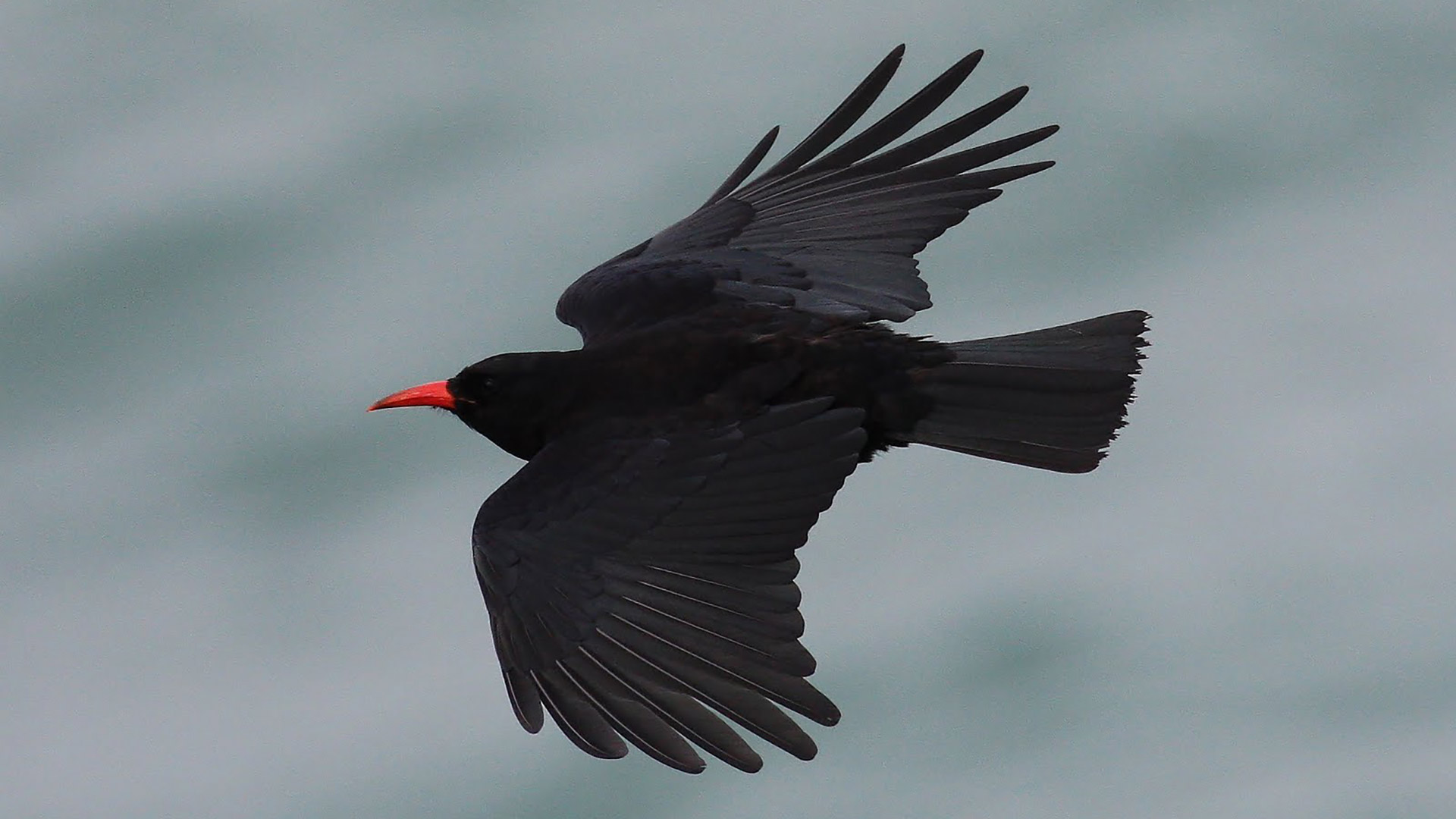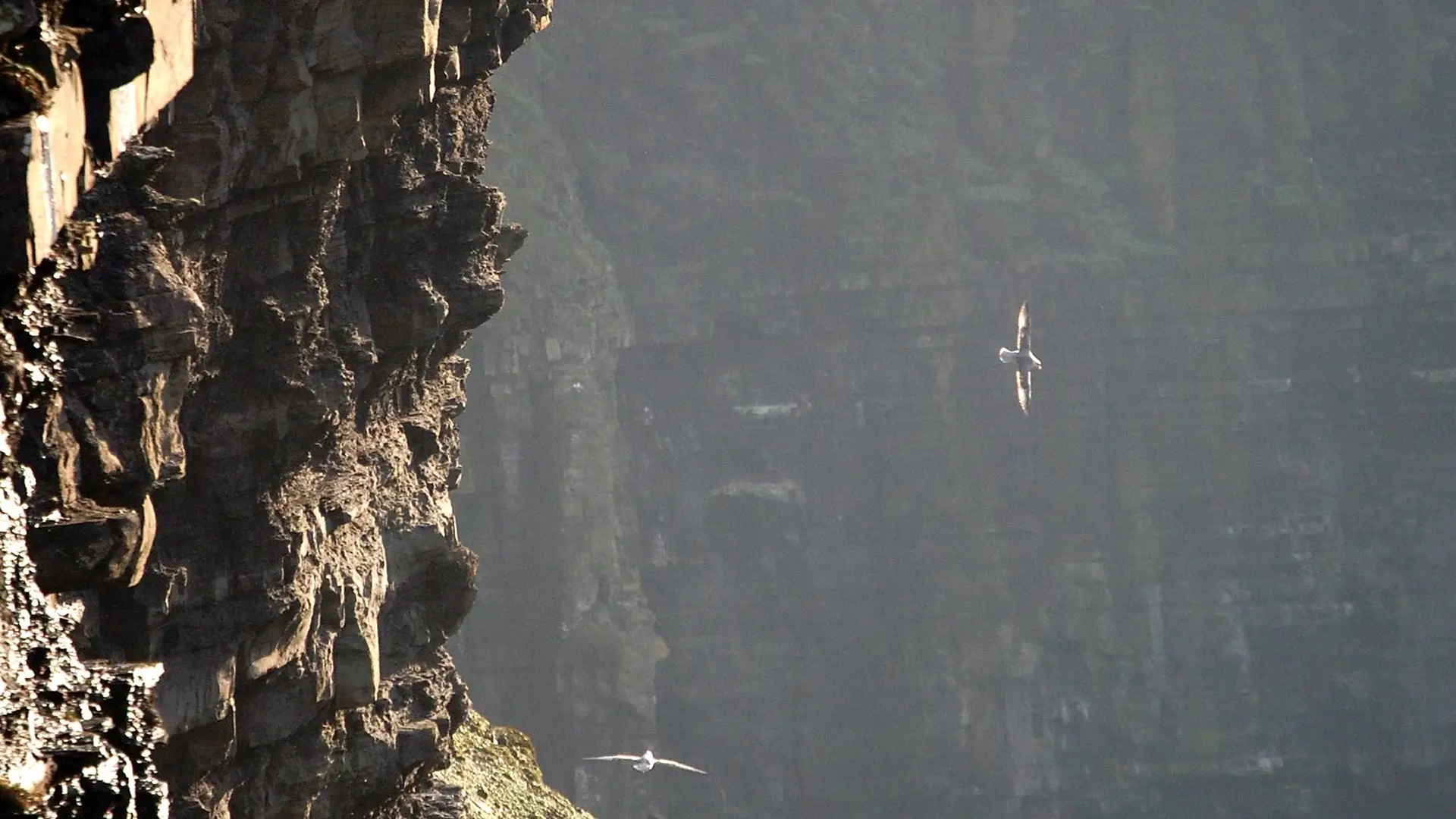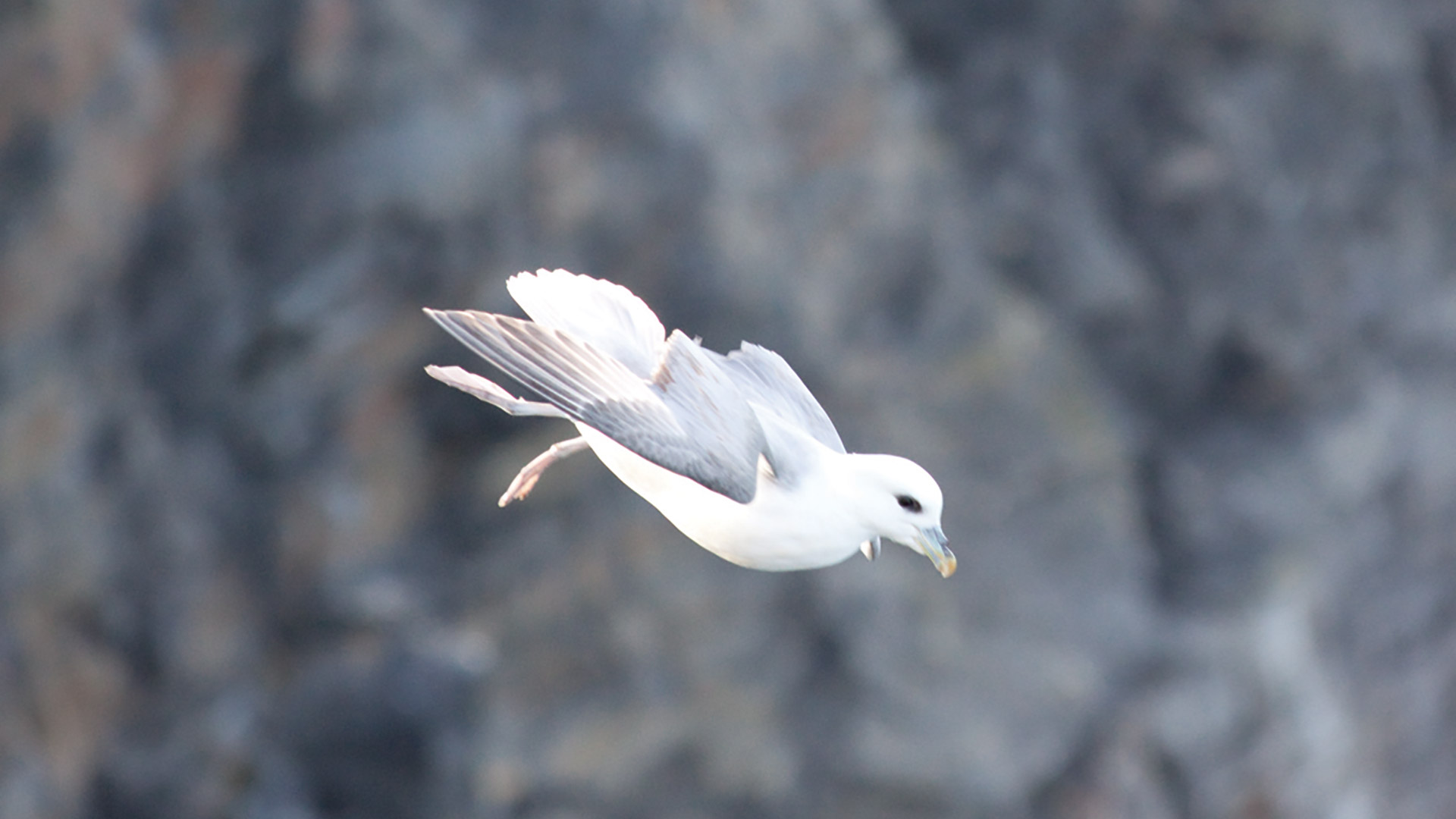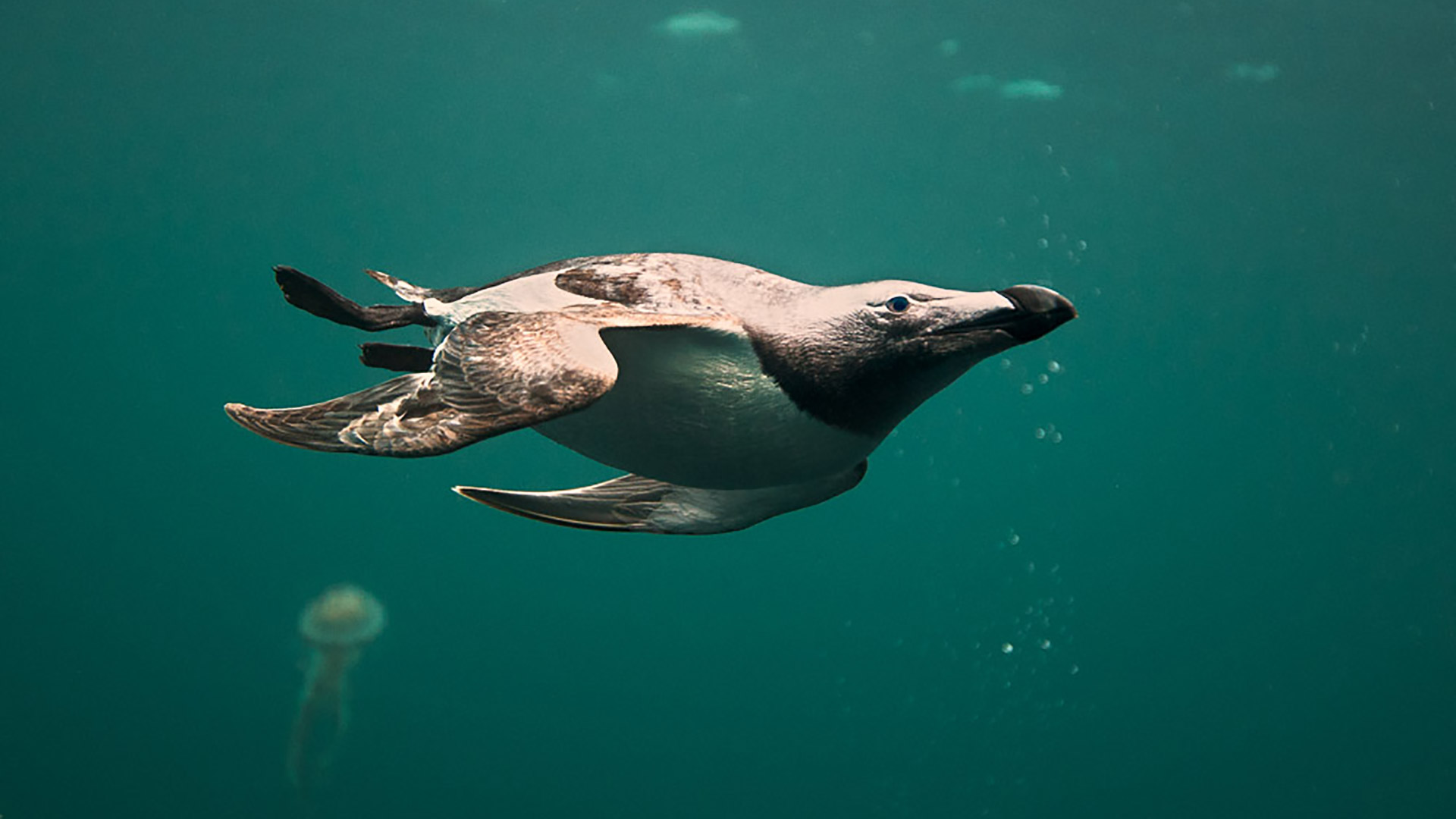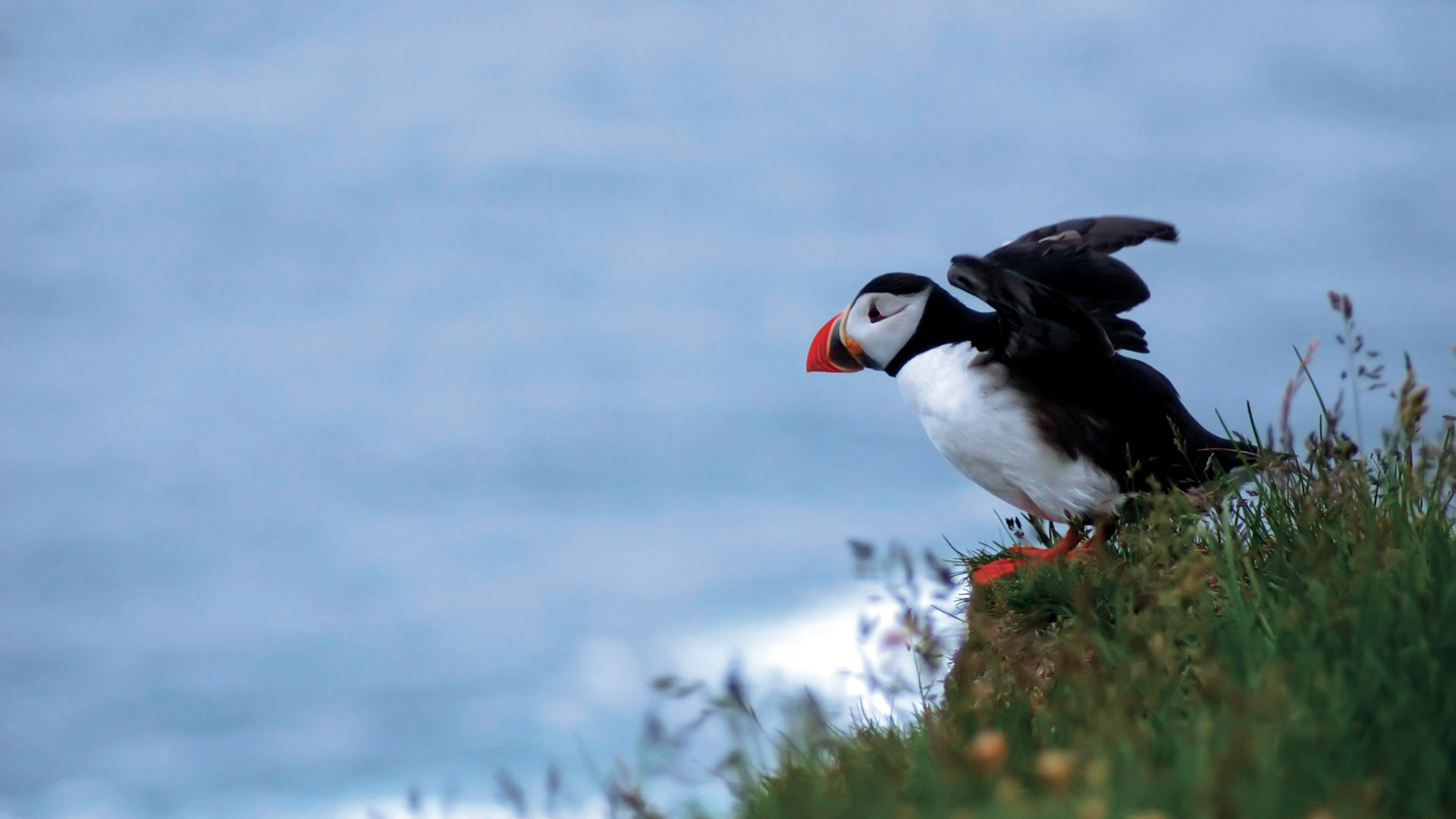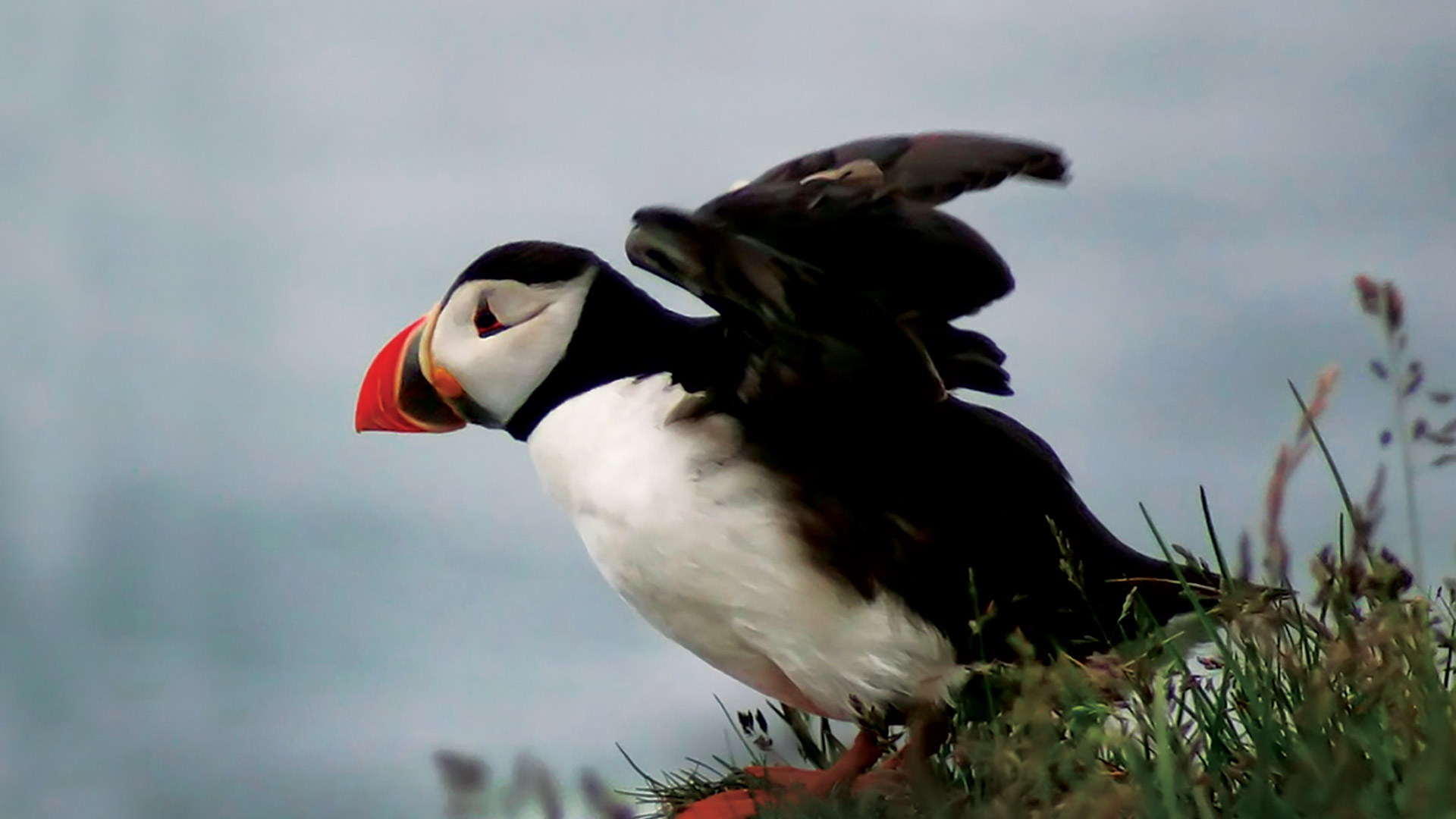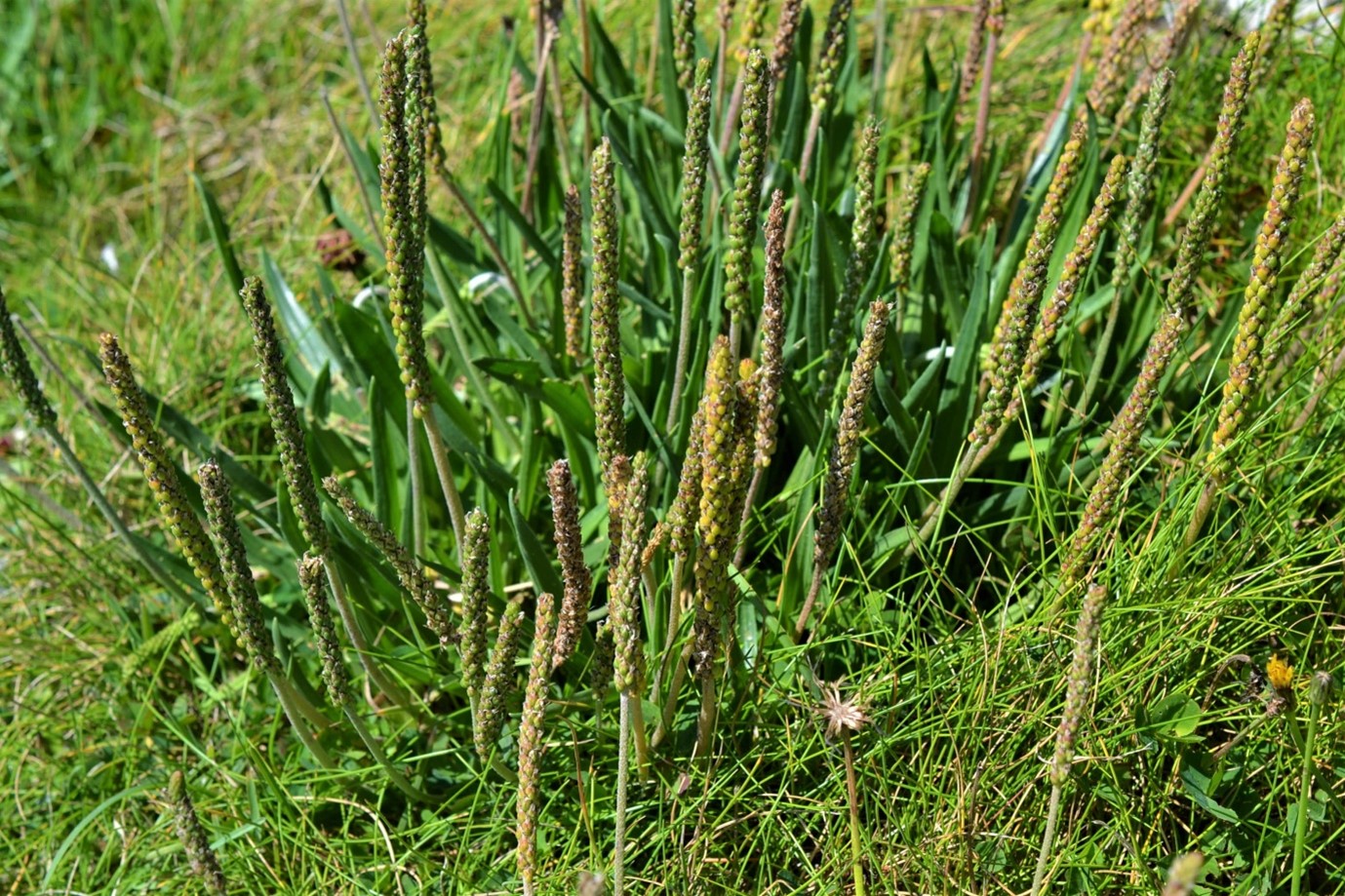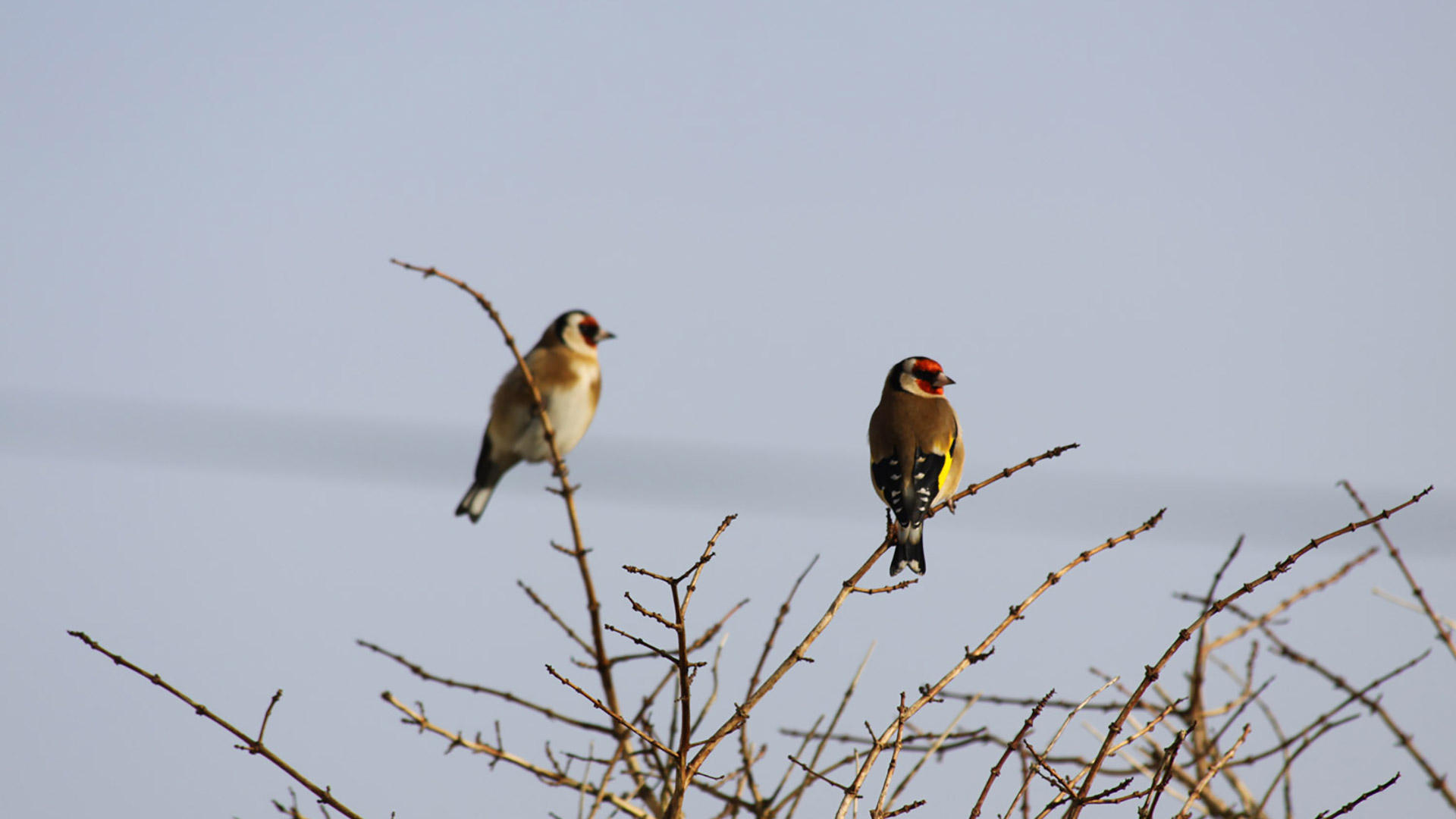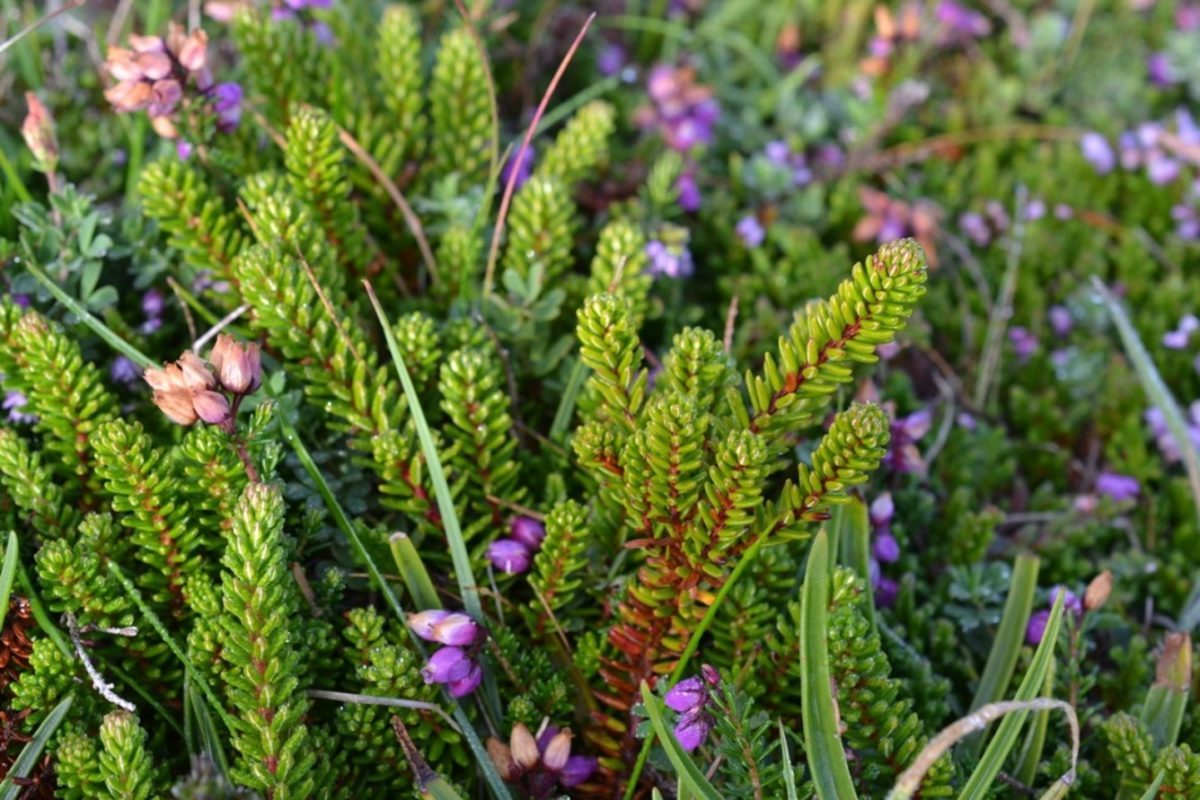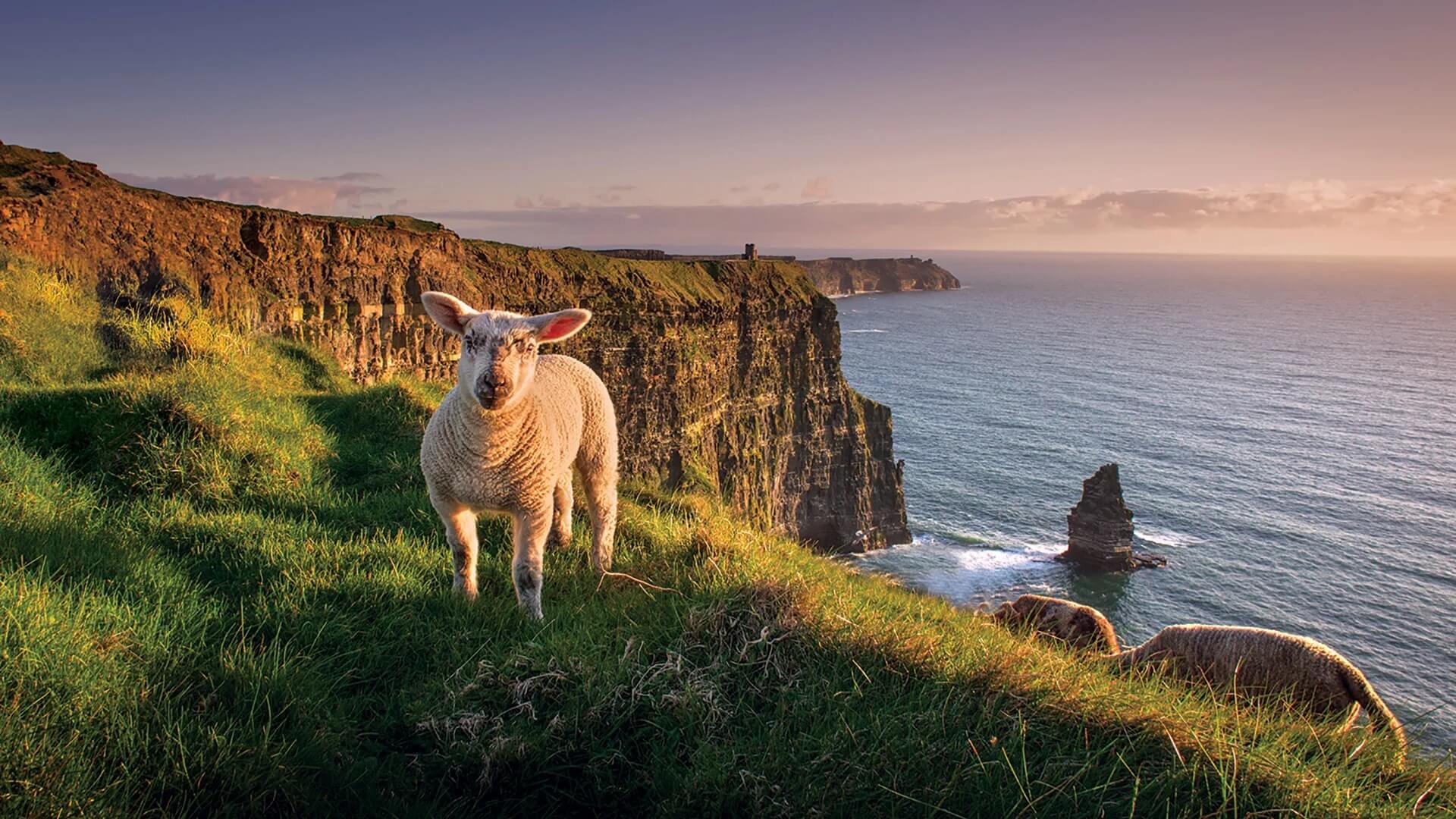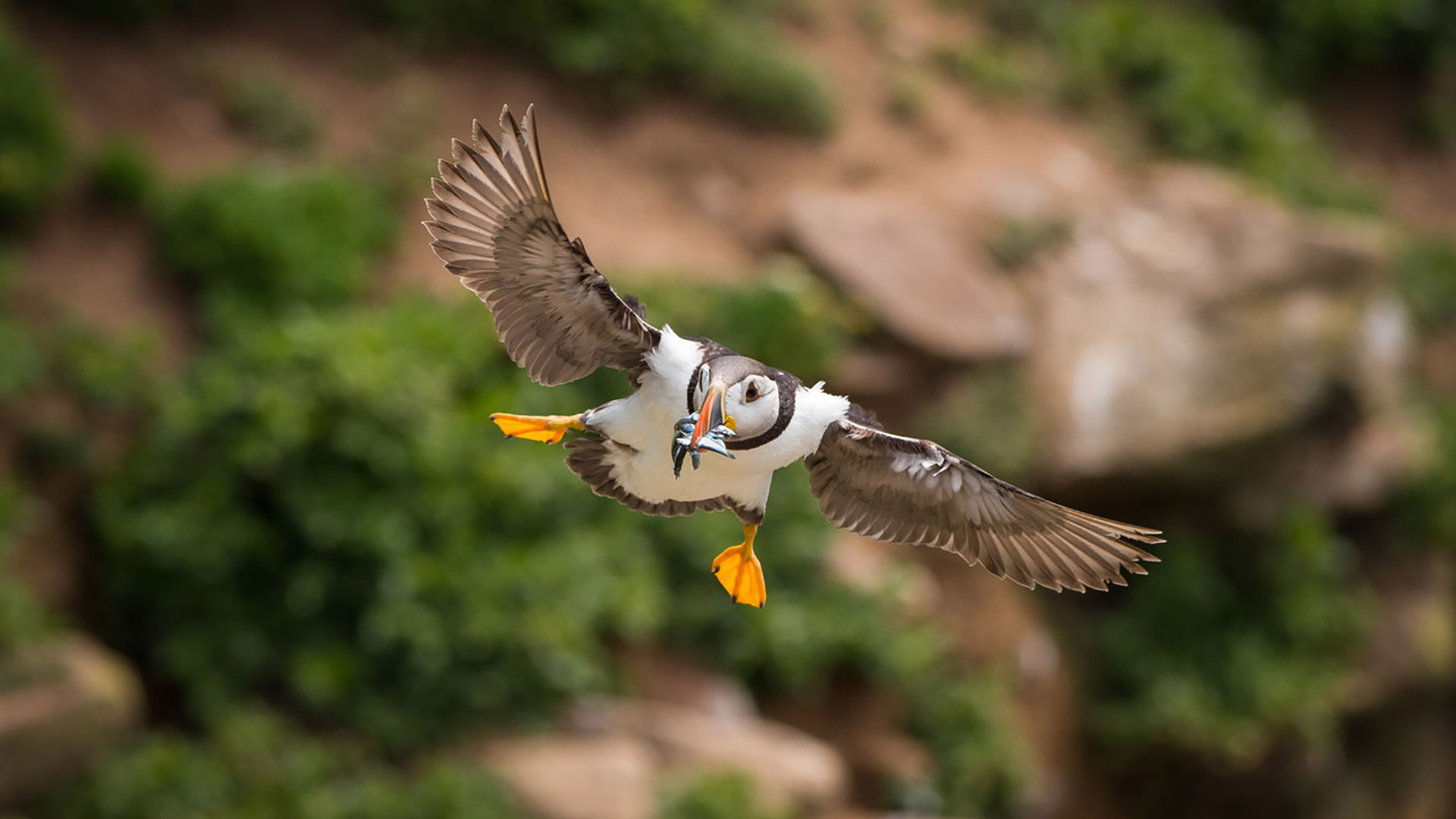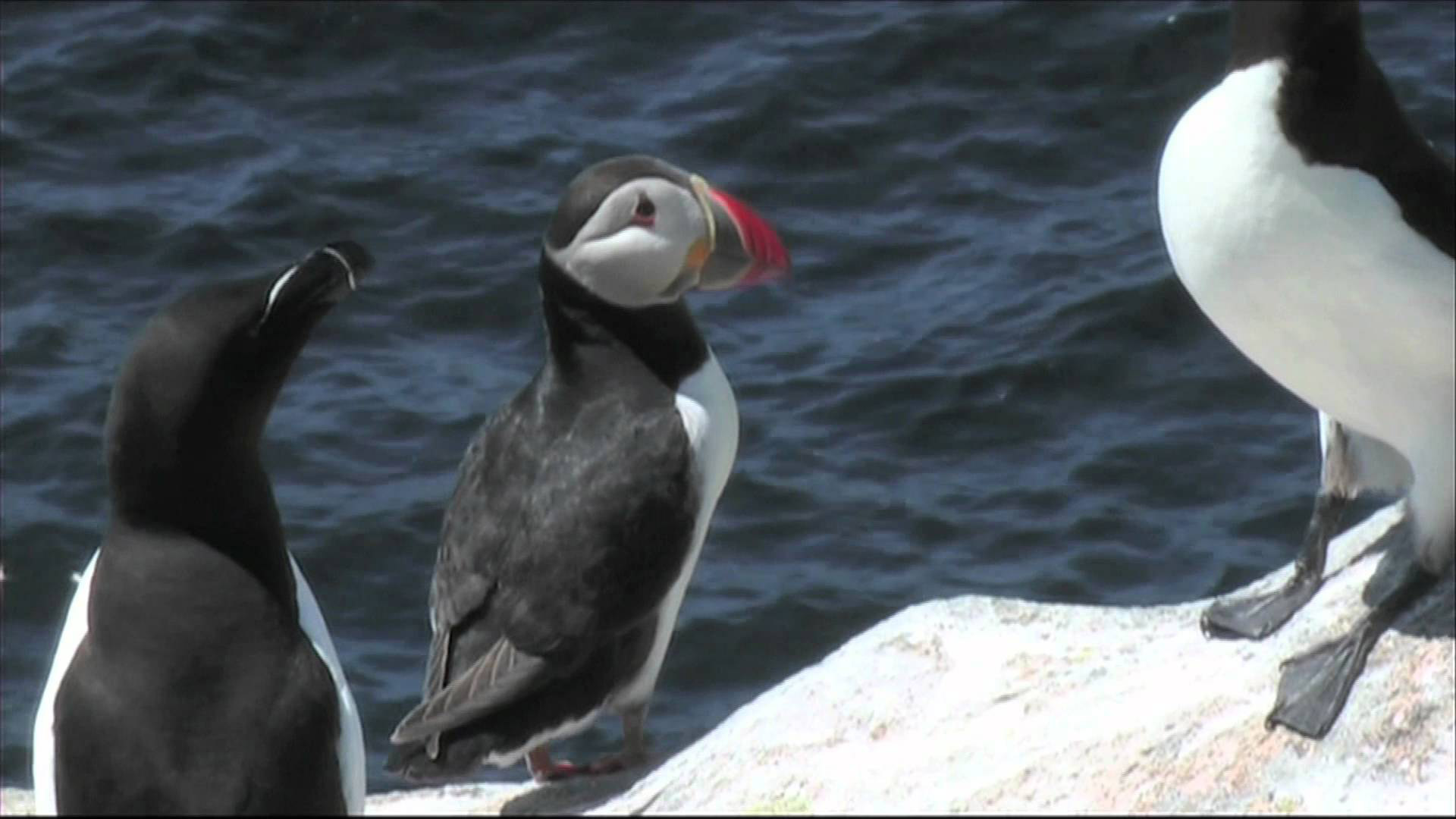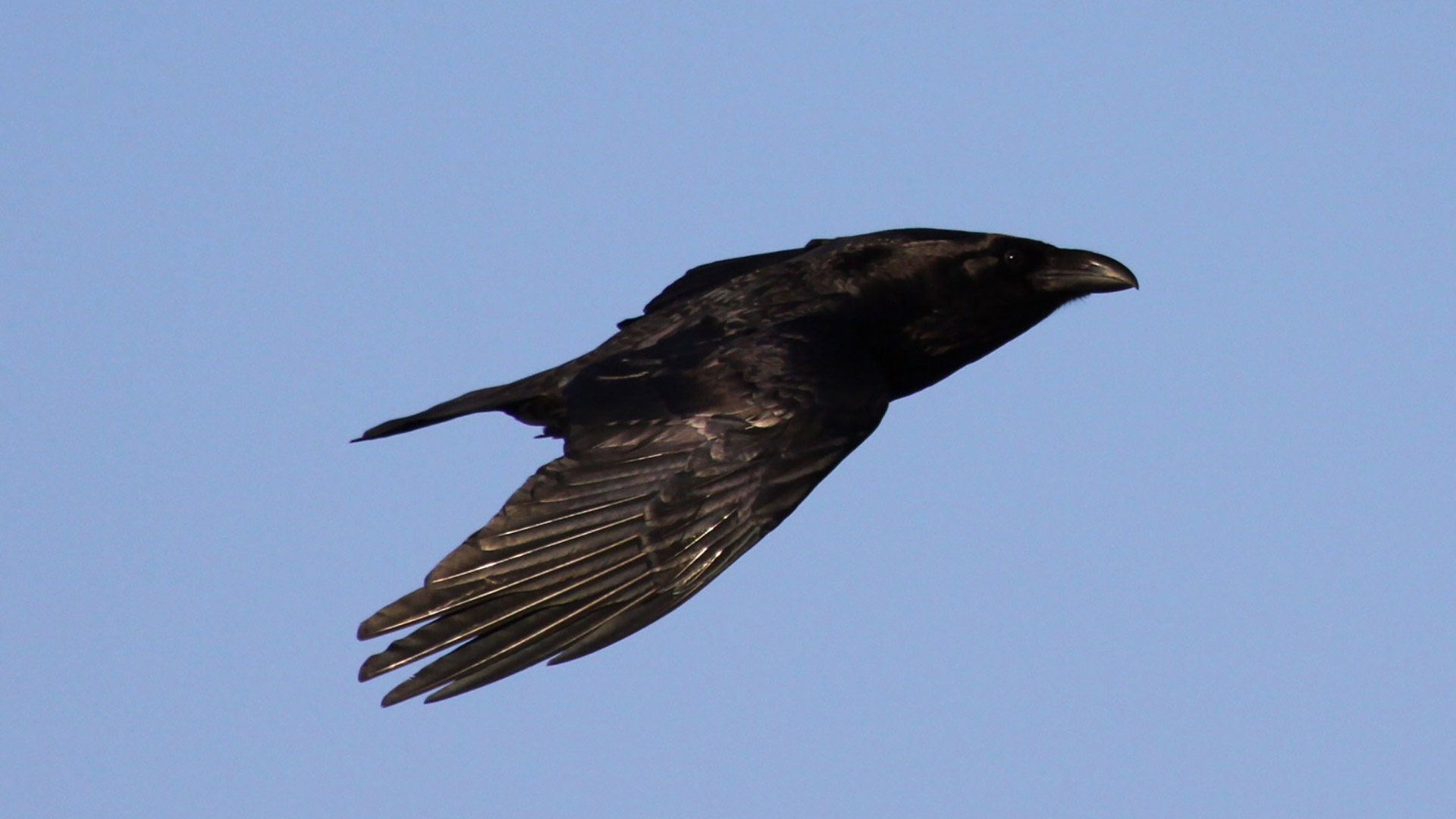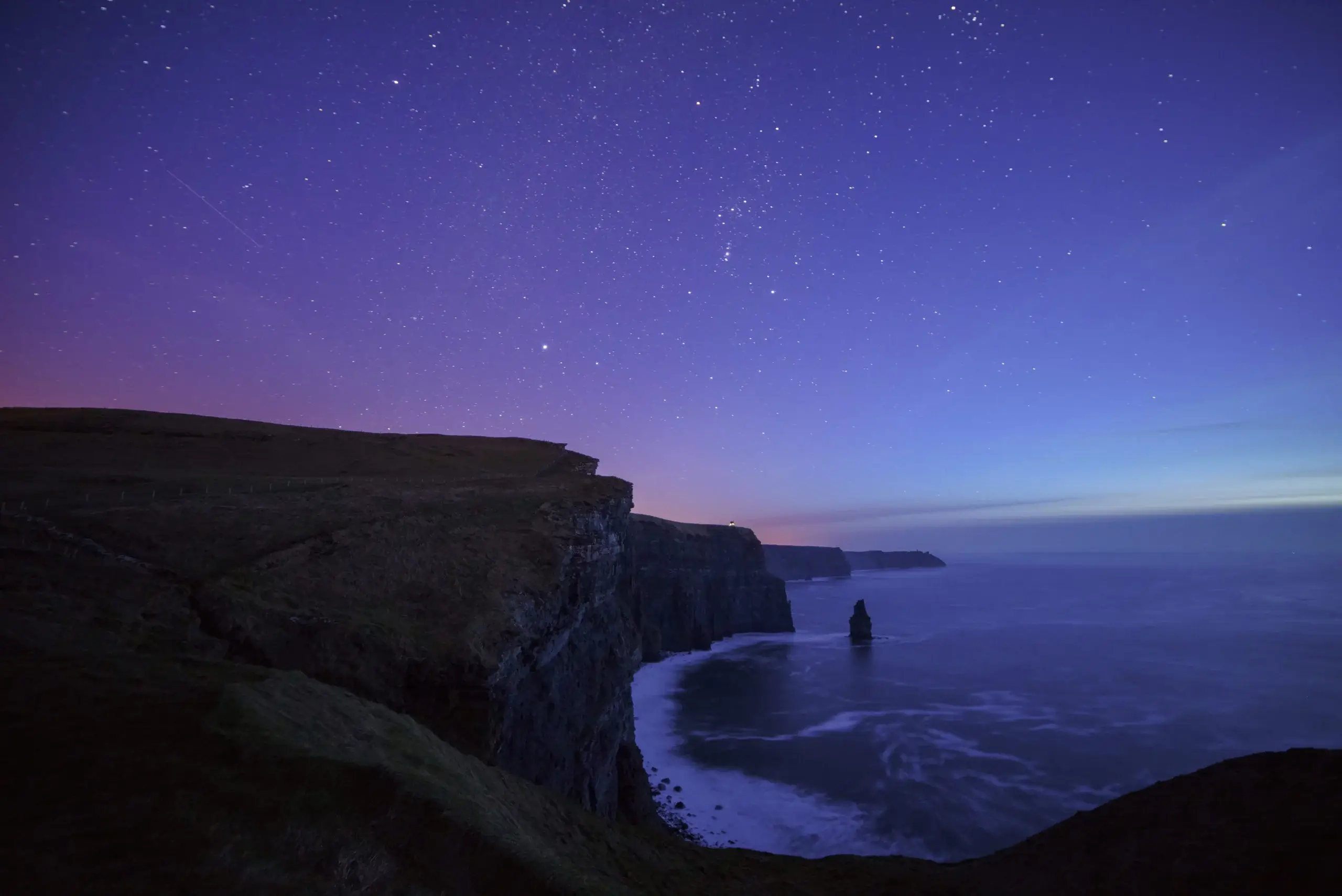
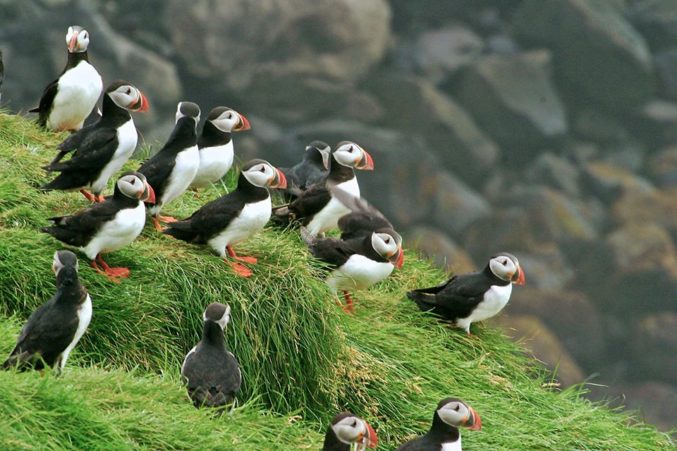
Bird Watching
We don’t like to crow about it, but did you know the Cliffs of Moher is one of the best places in Ireland to watch birds? The magnificent Cliffs on the Wild Atlantic Way host major colonies of nesting sea birds and are one of the country’s most important bird-breeding sites. Indeed, the area has been designated a Special Protection Area (SPA) for Birds under the EU Birds Directive.
So, what better way to spend your time than to relax in the comforting embrace of mother nature while observing the playful antics of the thousands of sea birds?
At the Cliffs you can see over 20 different species, including internationally important numbers of guillemot and razorbill, and also significant numbers of puffin, kittiwake and fulmar.
Standing on the South platform you can avail of views back to O’Brien’s Tower and along the cliff face where a long green piece of rock, known as Goats Island, juts out to sea. While it is not really an island – there is a narrow link to the cliff face – it takes its name from the story that Cornelius O’Brien kept goats there. Today it is an important nesting site for puffins in the summer.
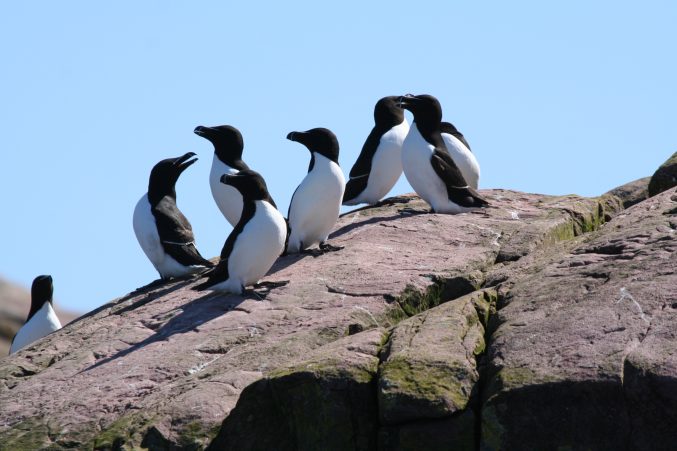
Special Protection Area
The Cliffs are also of special conservation interest for holding an assemblage of over 30,000 breeding seabirds.
Locally the birds are referred to as The Magnificent 7; from May to August the gregarious seabirds animate the Cliffs with their colour and sound.
From late February, a variety of seabirds like guillemot, razorbill, great black-backed gulls and shag begin to return to the Cliffs from their wintering grounds. As for the Atlantic Puffin, it typically arrives around the end of March.
You may also be lucky enough to see endangered bird species like choughs and peregrine falcons.
Here’s a look at our magnificent 7
Top tips for your visit!
- Bring a pair of binoculars with you when you visit, to help with your viewing, and if you don’t have binoculars, ask one of our team members at reception as we will loan you one for free!
- Download our App and Audio guide and listen and learn about the Birds that you might witness at the cliffs
- Get your children interested and download our activity booklet in advance so they have fun while learning about the Magnificent Seven.
- Bring a picnic, and avail of a complimentary picnic blanket, (ask our team members)
- Book online only
If you have children, download our activity booklet on the birds here in advance of your visit. They will have loads of fun spotting the birds at the cliffs.
For additional learning resources click here.


